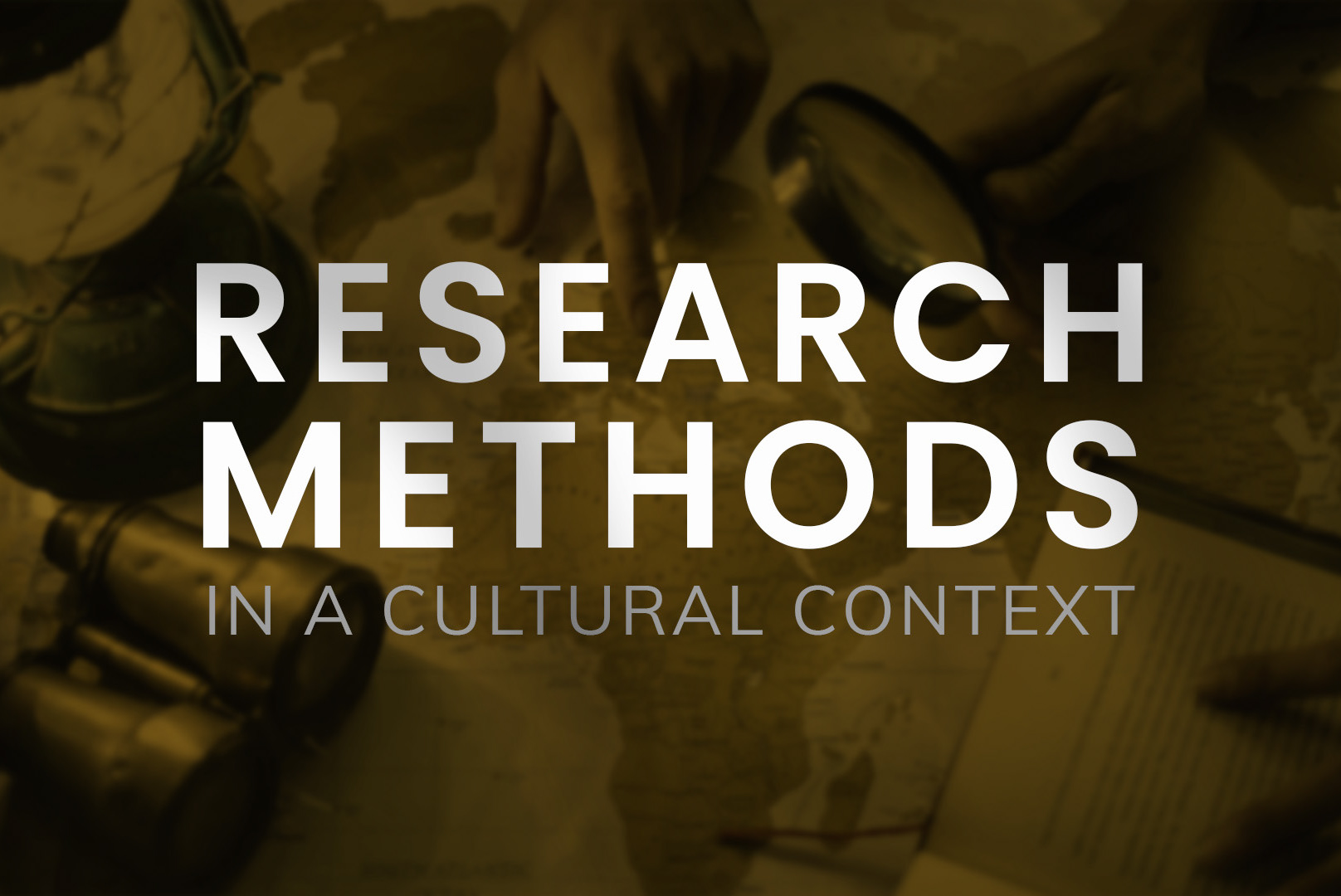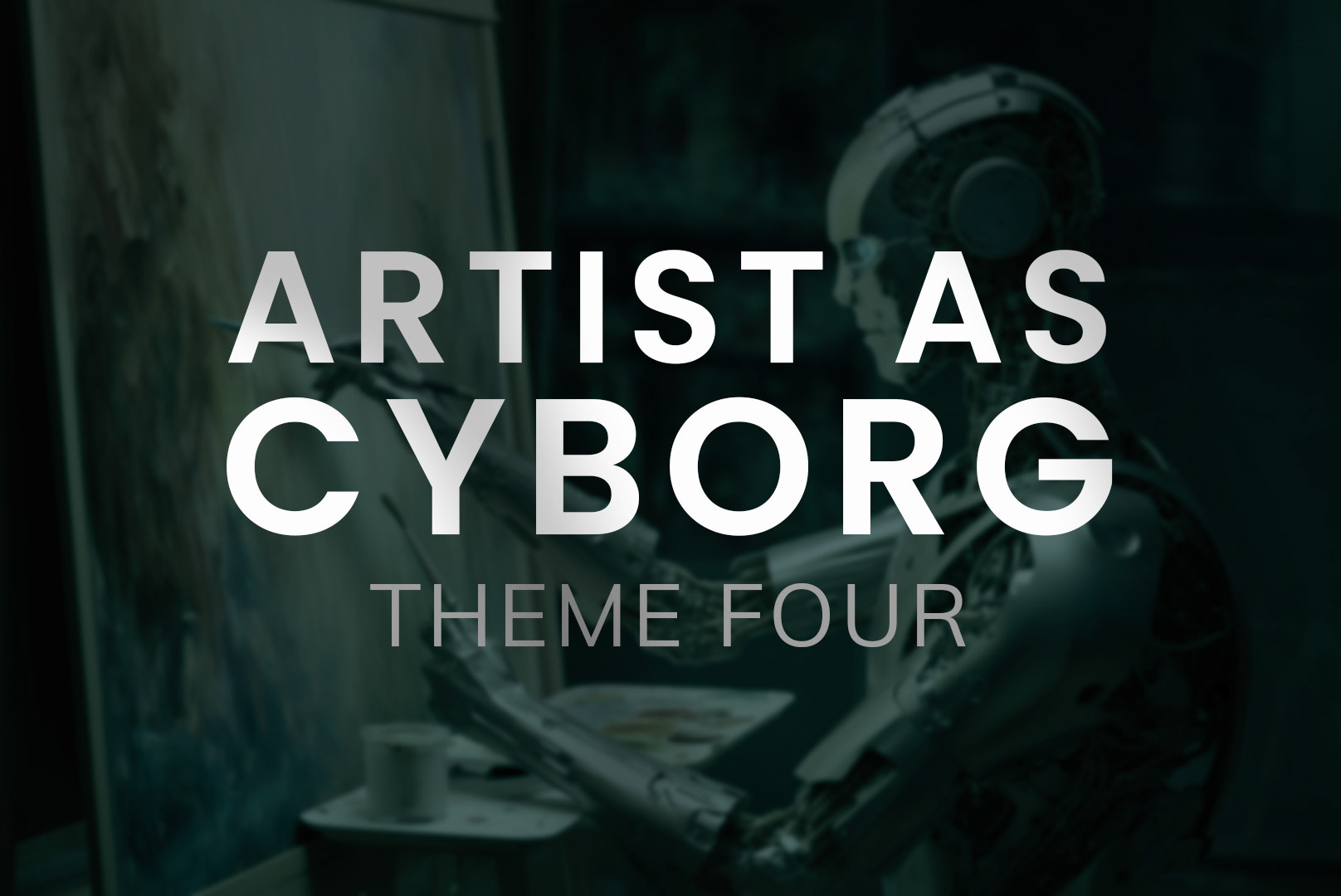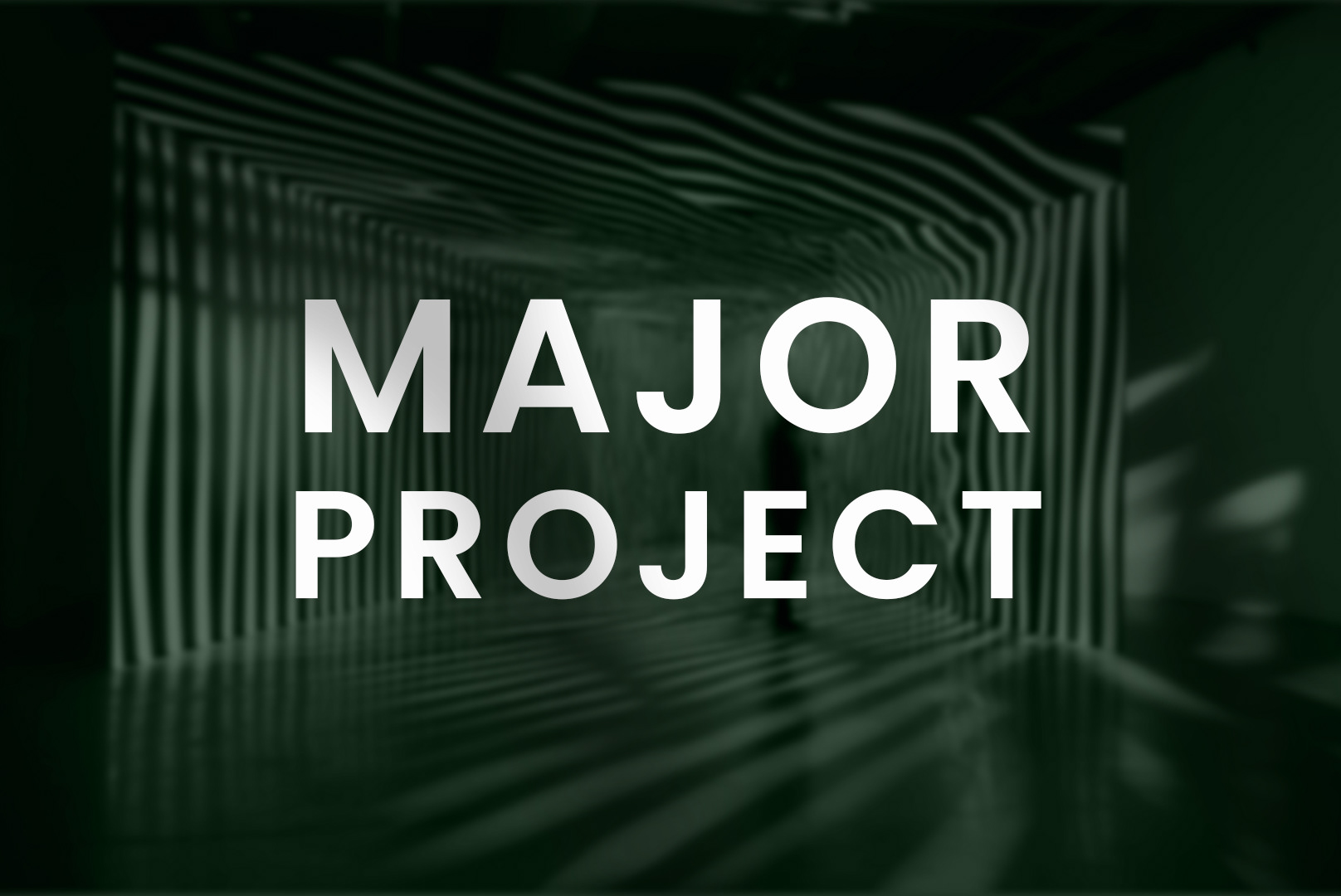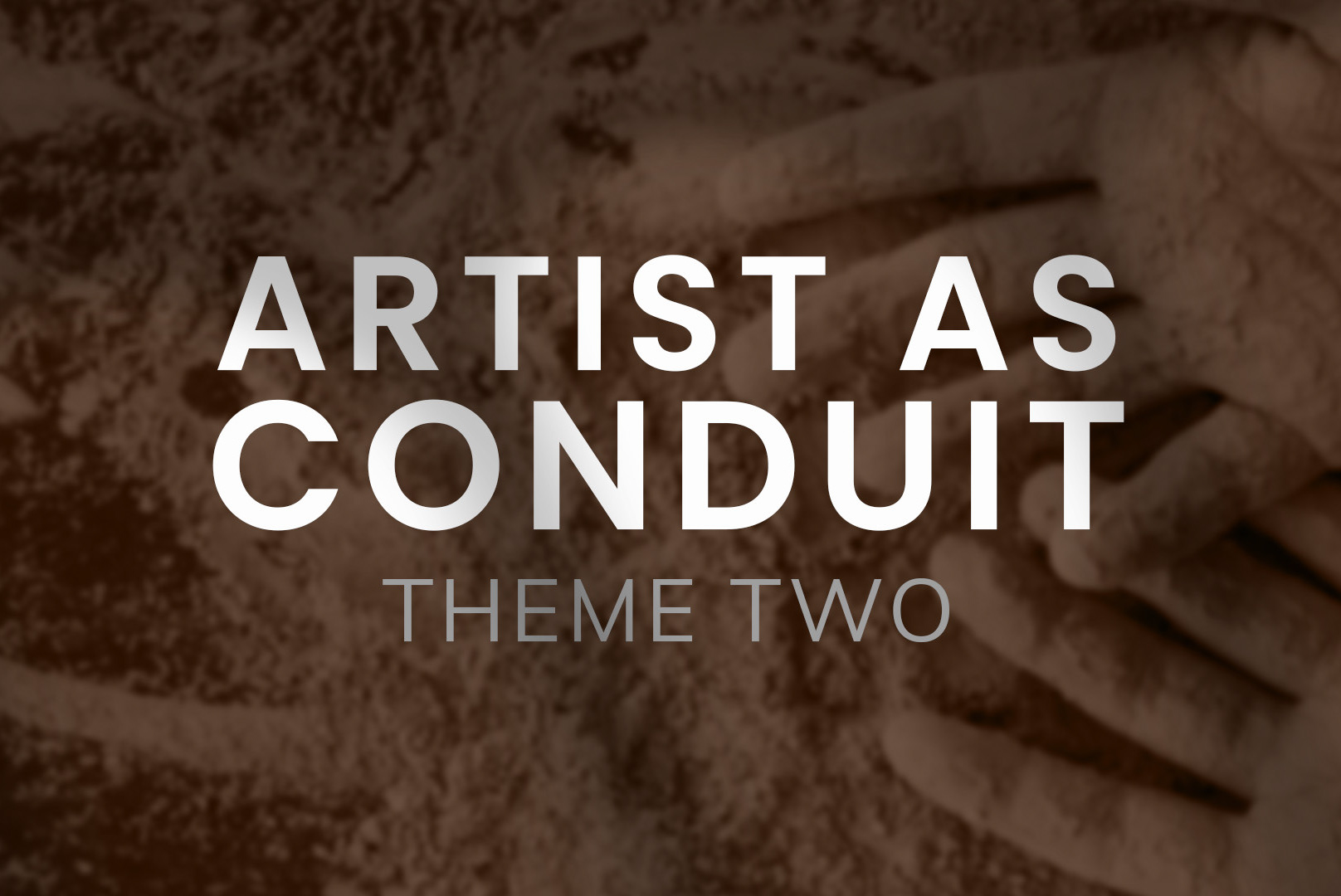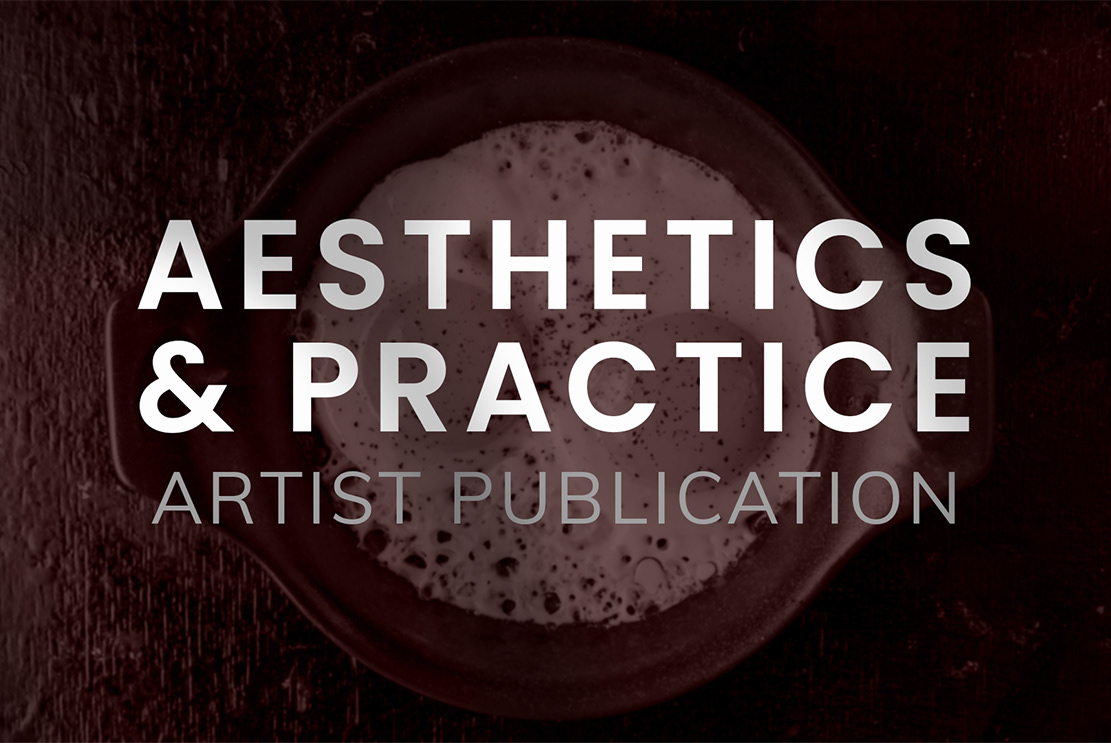The Expanded Art Forms course introduced me to experimental audiovisual practices, focusing on techniques like multi-screen projection, projection mapping, and multichannel audio. Through hands-on workshops and theoretical discussions, I explored how to combine multiple media in my work. The course provided a solid foundation in practice-based methodologies, helping me develop my creative skills and critical understanding in preparation for my Major Project.
This portfolio is a reflection of my journey throughout the Digital Arts course, documenting my experiments, research, and final project. The course focused on exploring expanded art forms, emphasizing the integration of various digital technologies such as projection mapping, 3D scanning, and green screen techniques. My personal interest in blending technology with visual art drove me to investigate how different media can be combined to create immersive, transformative experiences. Throughout the term, I participated in workshops and critical sessions, each providing me with new insights into the relationship between digital tools and artistic expression.
The work presented here showcases a combination of my technical skills and conceptual depth, culminating in my final project, "Mapping Emotions" This project is an exploration of growth, transformation, and the interplay between external forces and internal emotional experiences. This portfolio contains a comprehensive record of my work, from the early stages of experimentation to the final piece. It includes detailed descriptions of each project, the media used, and the research behind it, all contributing to a broader understanding of how digital tools can expand traditional forms of art.
October 9 - Quick Crit
First Steps into Videography and Sound In the initial phase of the course, I presented a 60-second video that combined two forms of media: videography and sound. This was my first introduction to expanded art forms, where I learned how these elements could be used to communicate conceptual ideas through visual and auditory experiences. The project allowed me to explore the potential of multimedia to create an emotional response in the viewer, setting the stage for more complex experiments later on.
This critical session helped me identify areas for improvement in my approach, particularly in how to balance the visual and audio components of my work. Feedback from my peers and instructors emphasized the importance of refining my editing techniques and sound design, which I took into account for future projects.
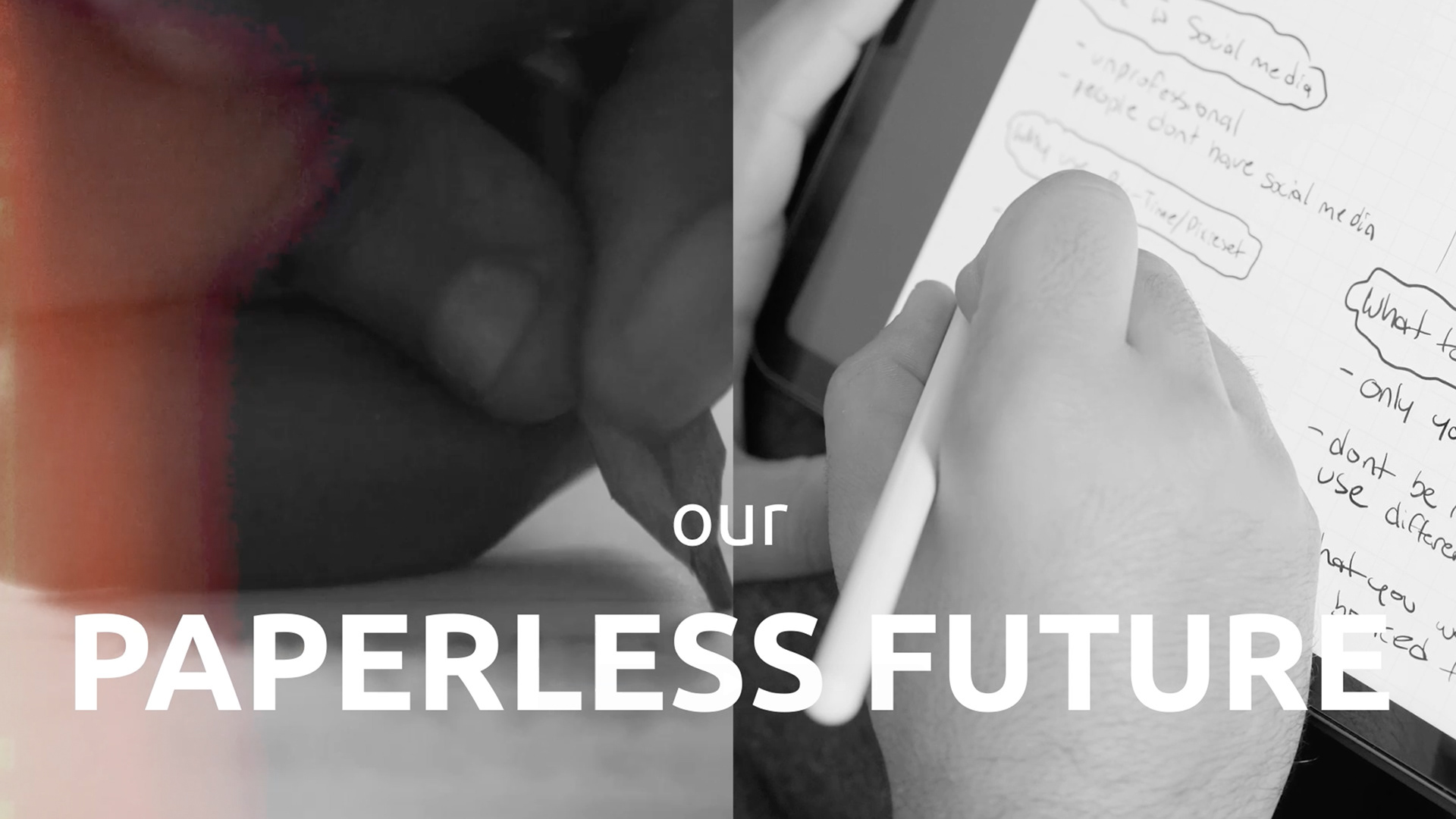
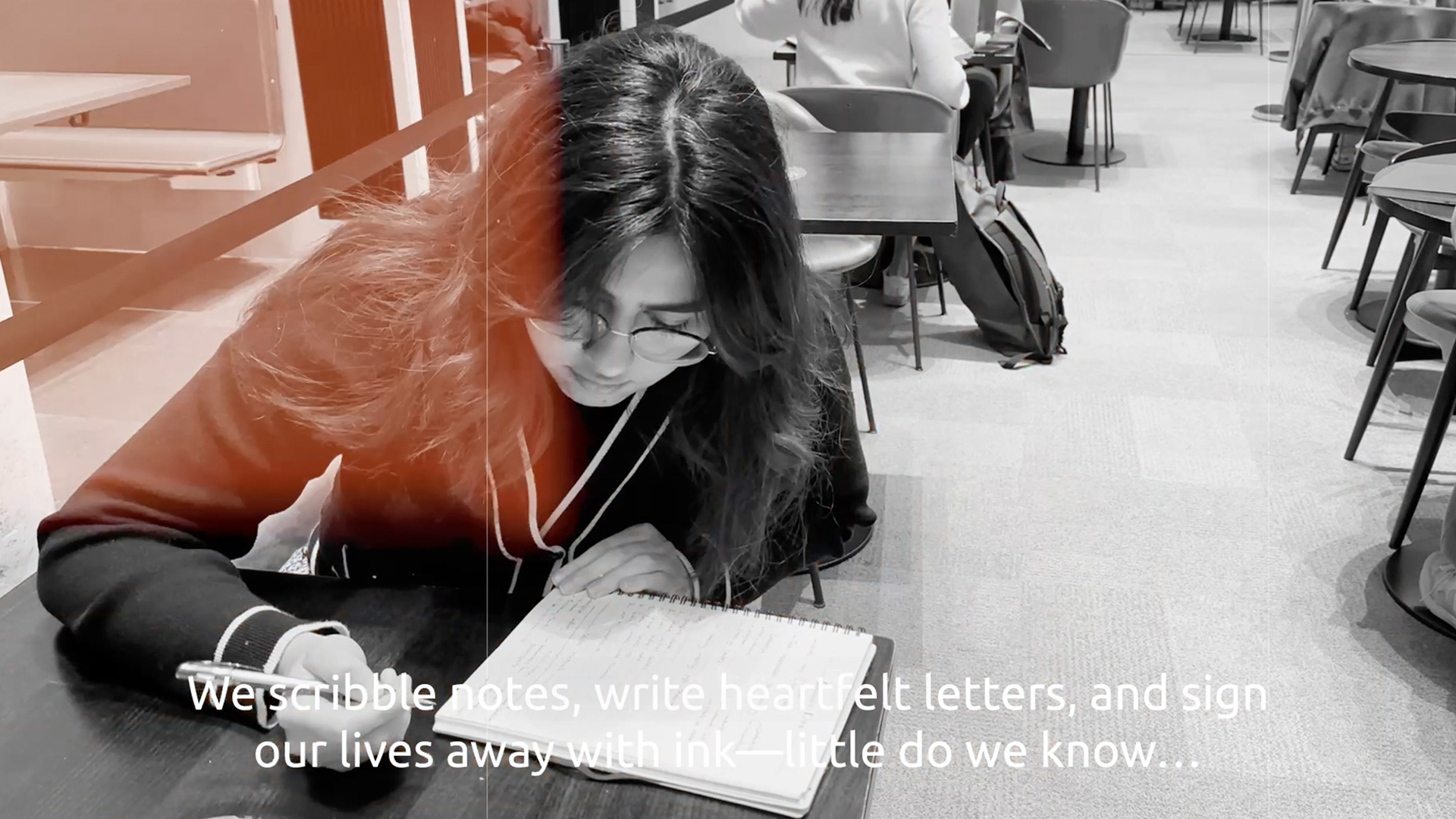
October 16 - 16mm Workshop
During this workshop, I explored the transition from analogue to digital by manipulating 16mm film. Scratching, painting, and physically altering the film strips gave me a deeper understanding of the tactile nature of traditional media. The process of scanning and digitizing the film opened new possibilities for blending analogue techniques with digital tools.
The workshop allowed me to experiment with animation, as I scratched designs into the film that, when projected, created moving textures. This hands-on approach to creating art gave me a foundation for understanding how traditional media can be transformed and expanded in a digital context. It also contributed to my later interest in using physical objects as canvases for projection mapping.
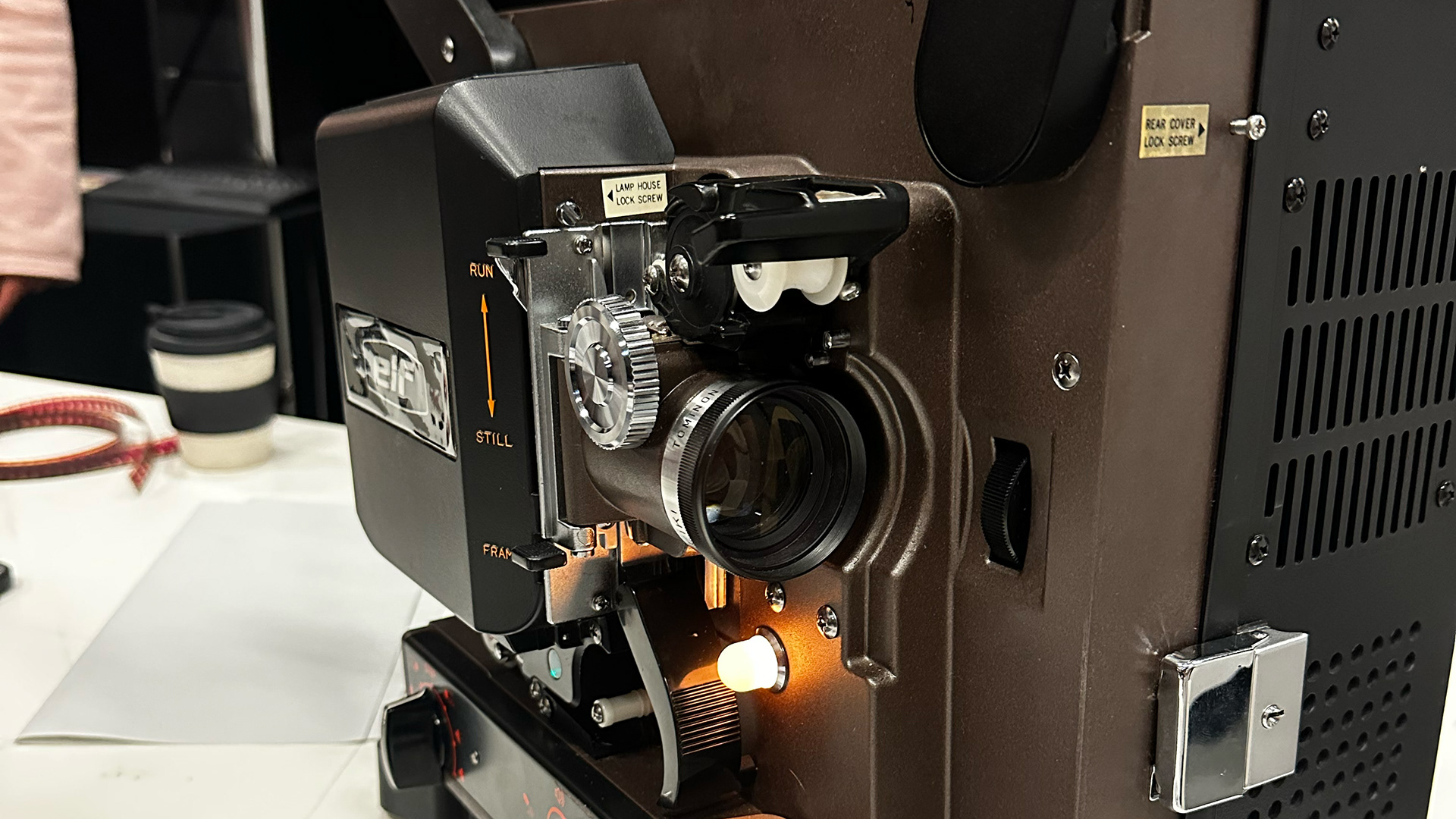
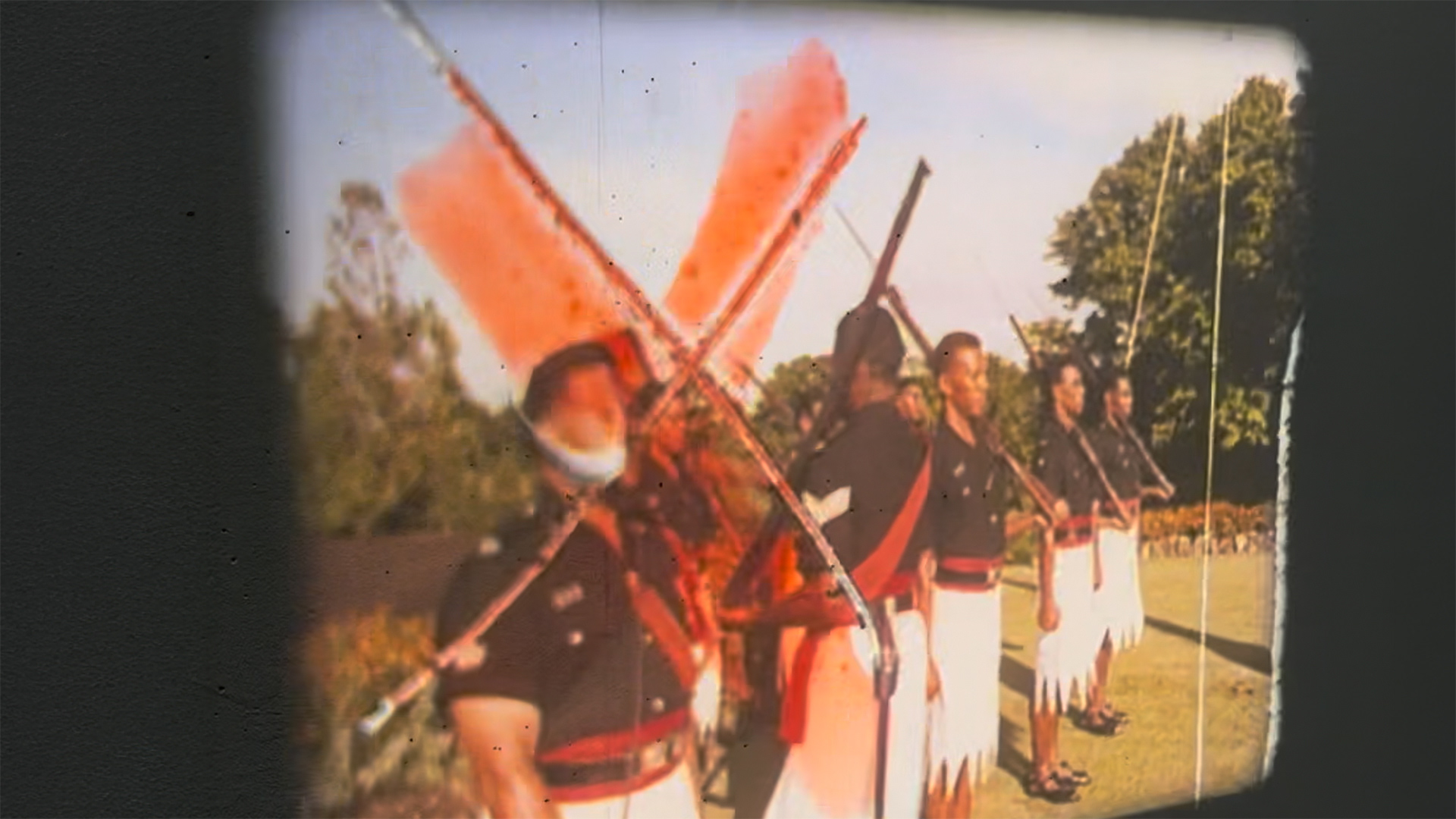
October 24 - Projection Mapping
Projection mapping became a key tool in my practice after this workshop. I was introduced to Mad Mapper and began experimenting with projecting images onto physical surfaces, transforming them into dynamic, interactive canvases. This session was a turning point in my work, as I realized the potential of projection mapping to create immersive environments that engage the viewer both visually and spatially.
I worked on small-scale experiments during the workshop, learning how to manipulate projections in real-time and adjust them to fit different surfaces. This experience laid the groundwork for my final project, where I combined projection mapping with conceptual storytelling to create a narrative that evolves through the interaction of light and form.
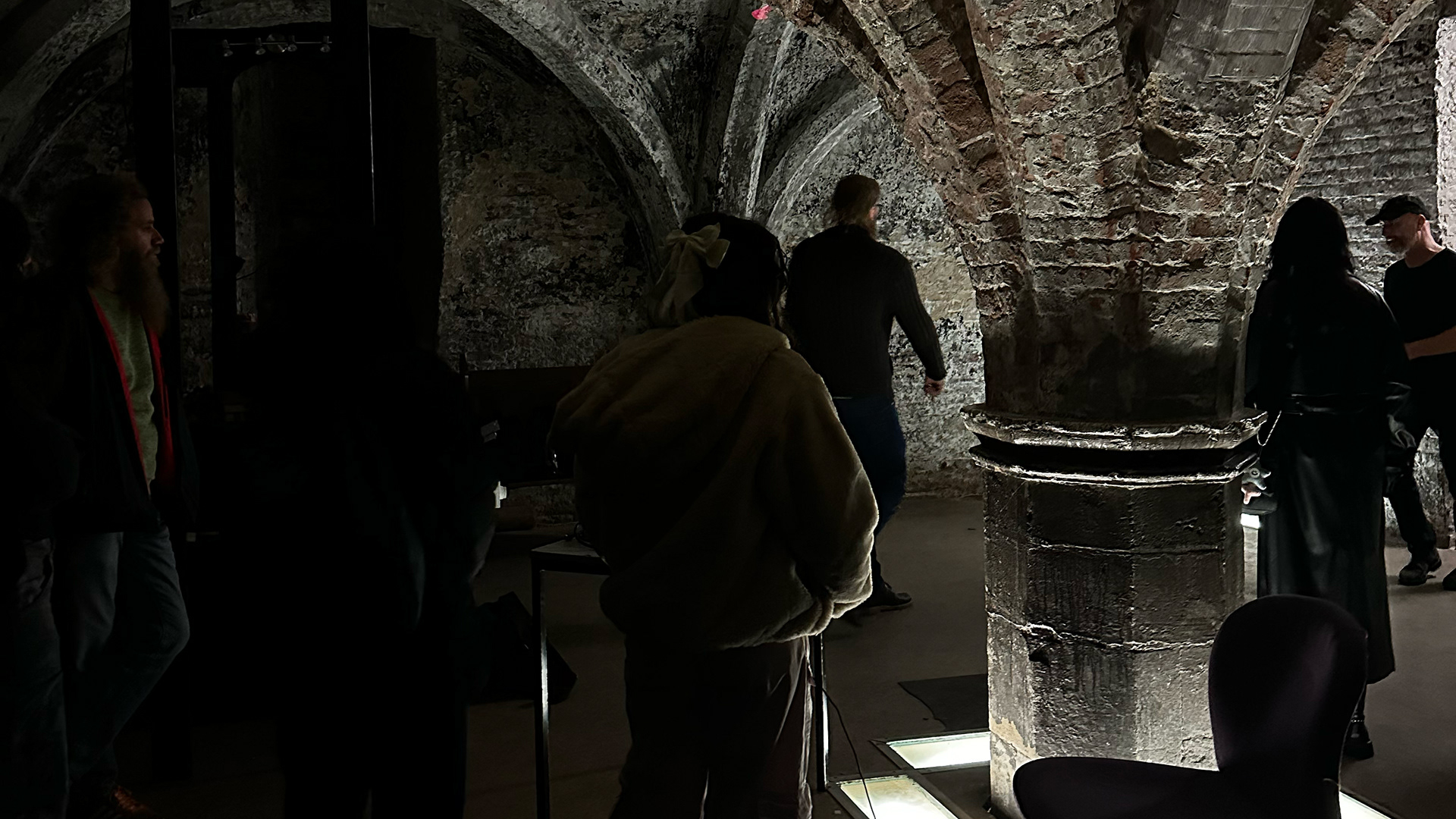
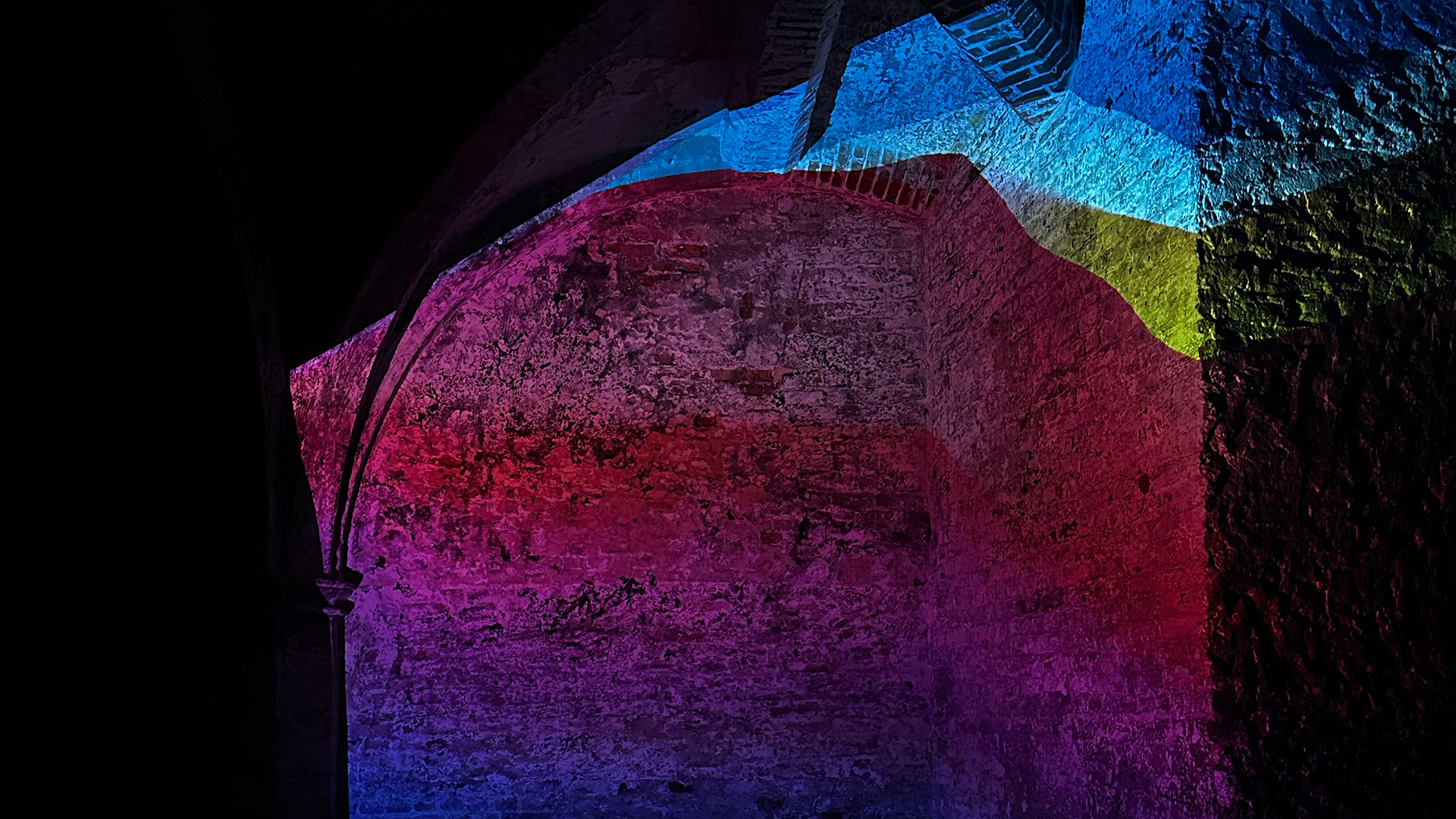
November 6 - 3D Scanning
This session introduced me to 3D scanning and photogrammetry, two techniques that allowed me to capture real-world objects and convert them into digital models. Using my phone to scan objects, I created 3D representations that I could manipulate in software like Maya. This opened up new possibilities for integrating physical and digital elements in my work.
I experimented with different scanning techniques, learning how to refine the digital models and use them in projection mapping. This process gave me a greater understanding of how digital tools can be used to enhance and expand the possibilities of physical art. The integration of 3D scanning into my projects allowed me to create more complex, layered works that blur the line between the real and the virtual.
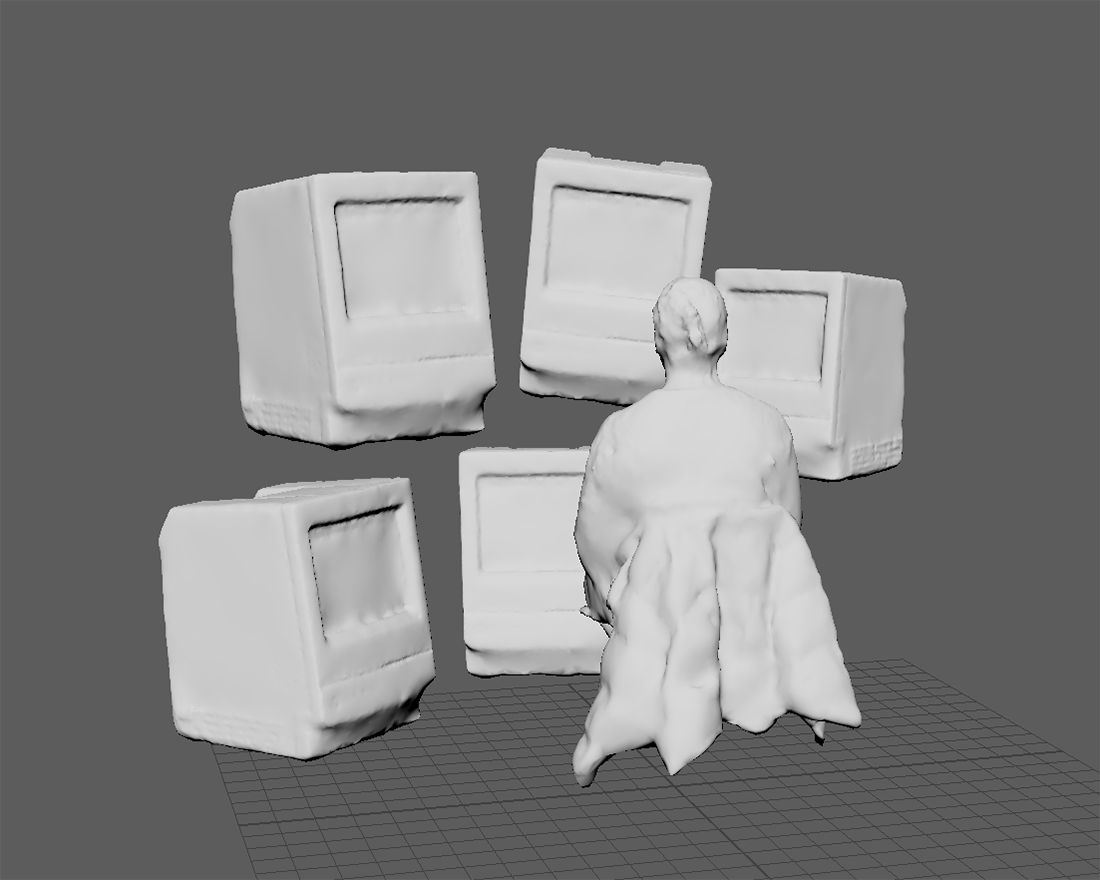
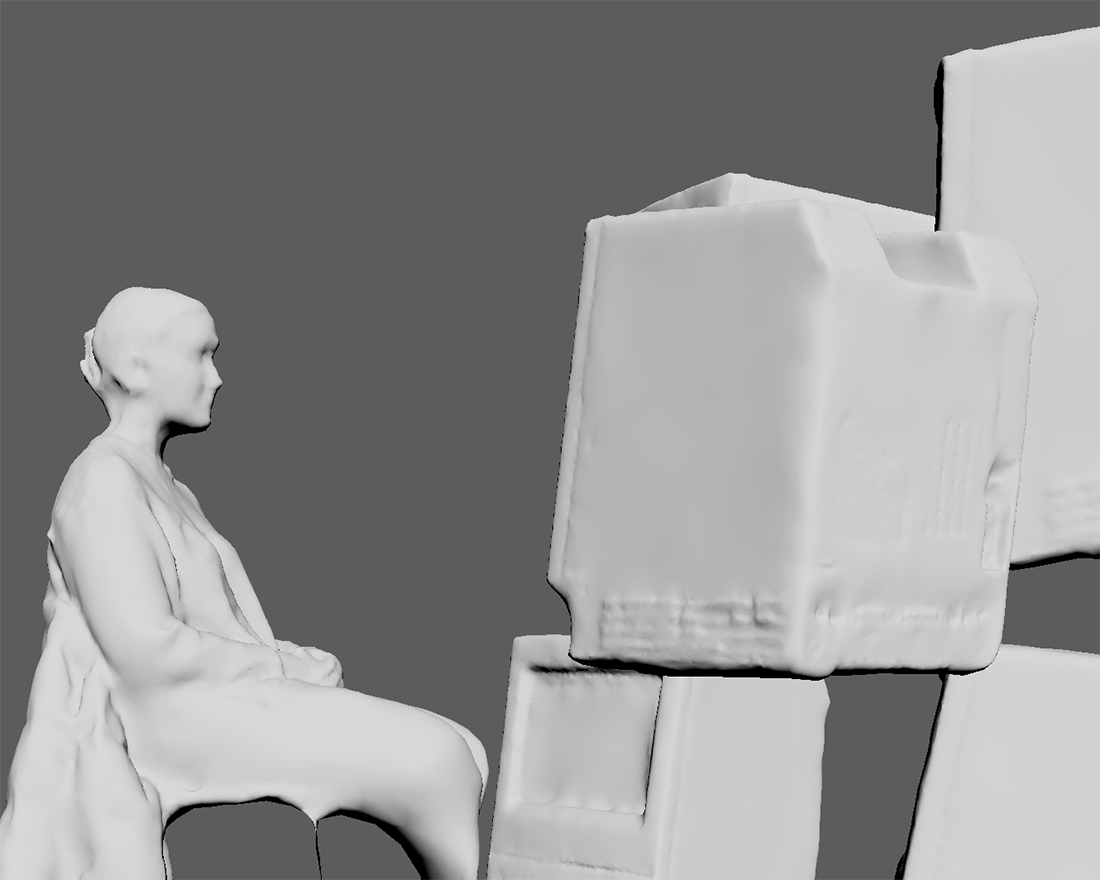
November 14 - Virtual Production
In this workshop, I explored virtual production and green screen technology. I learned how to integrate physical actors into virtual environments by filming them against a green screen and compositing the footage in post-production. This technique allowed me to create seamless transitions between real and digital worlds, enhancing the immersive quality of my work.
The green screen experiments pushed me to think about how to combine live action with digital elements in a cohesive way. I experimented with layering multiple elements, such as virtual backgrounds and real-time projection mapping, to create a unified visual experience. These experiments helped me develop the skills necessary to execute the complex layering in my final project.
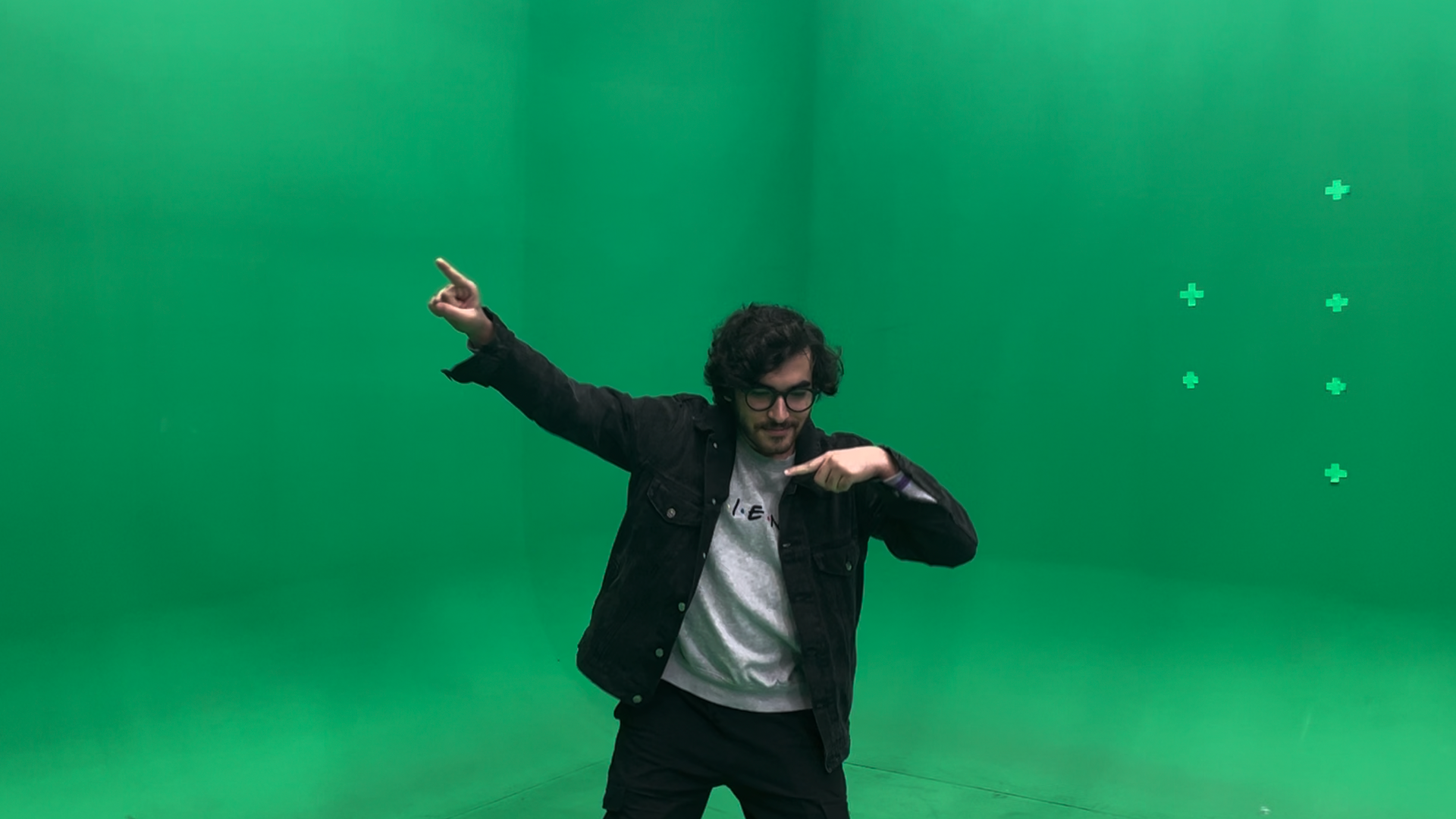
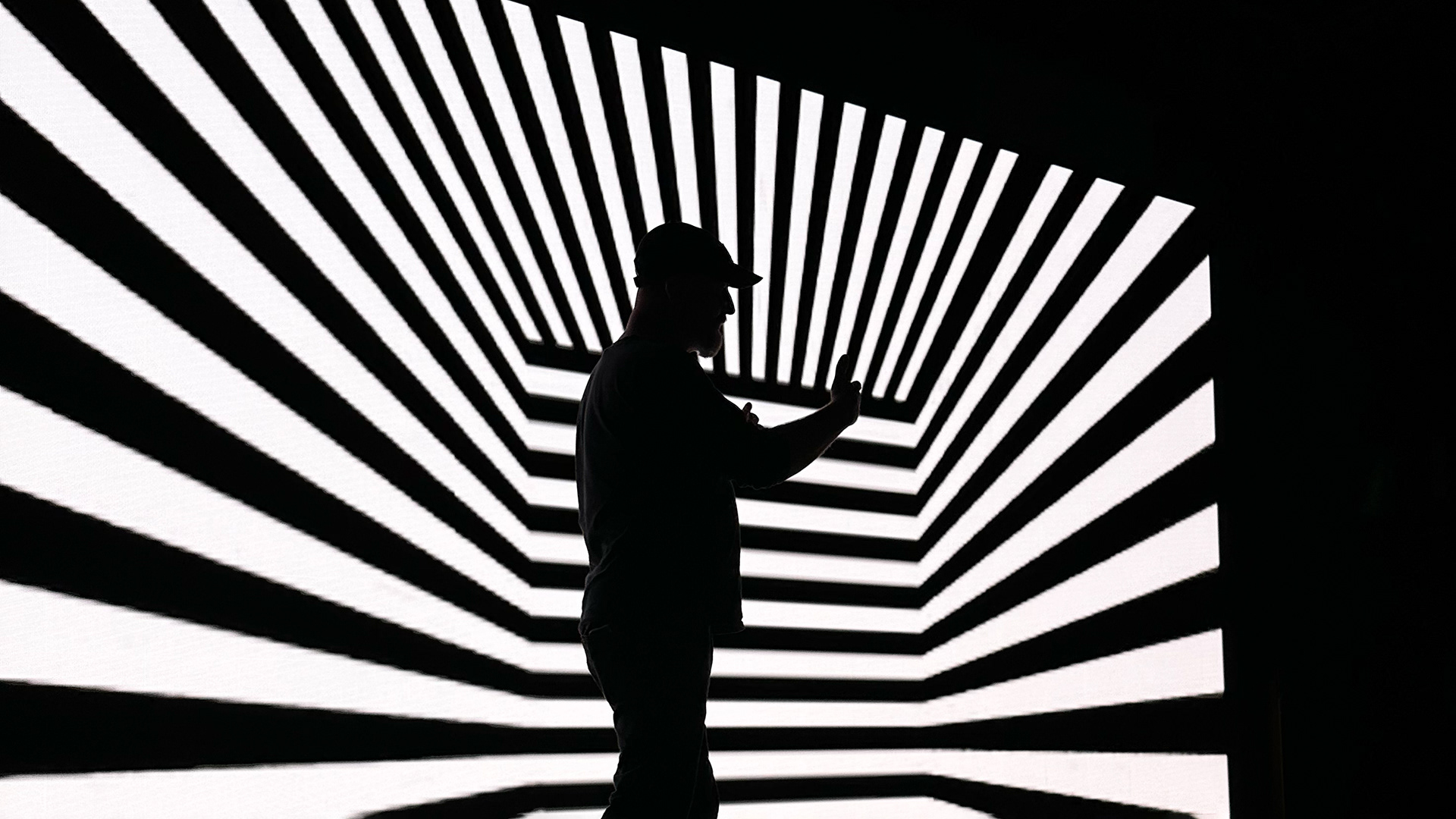
The workshops focused on developing practical skills in expanded art forms, covering techniques like multi-screen projection, performance, projection mapping, and integrating multichannel audio. Through hands-on practice and group critiques, I gained a deeper understanding of how to apply these tools to create complex, layered artworks. These sessions provided a strong foundation for future creative projects by encouraging experimentation and collaboration.
Police Lights
My first independent experiment with projection mapping. Using Mad Mapper, I projected red and blue flashing lights onto the walls of my room, synchronized with sound waves. This project allowed me to explore the relationship between light, sound, and space, creating an immersive atmosphere that mimicked the intensity of police sirens.
This project was an important step in my understanding of how to use projection mapping to create dynamic visual experiences. It also provided valuable insight into how sound and visuals can be synchronized to enhance the overall impact of a piece.
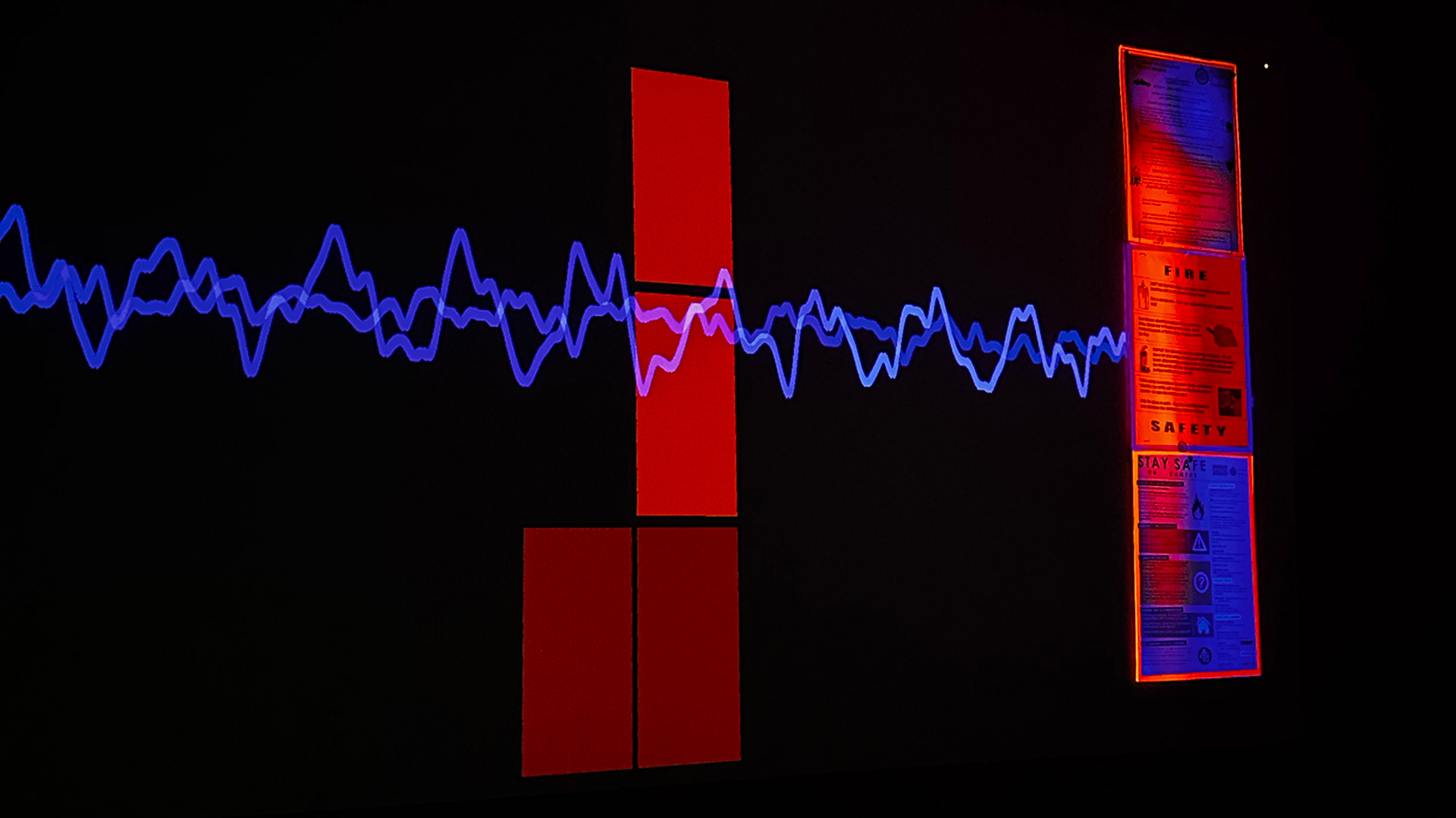
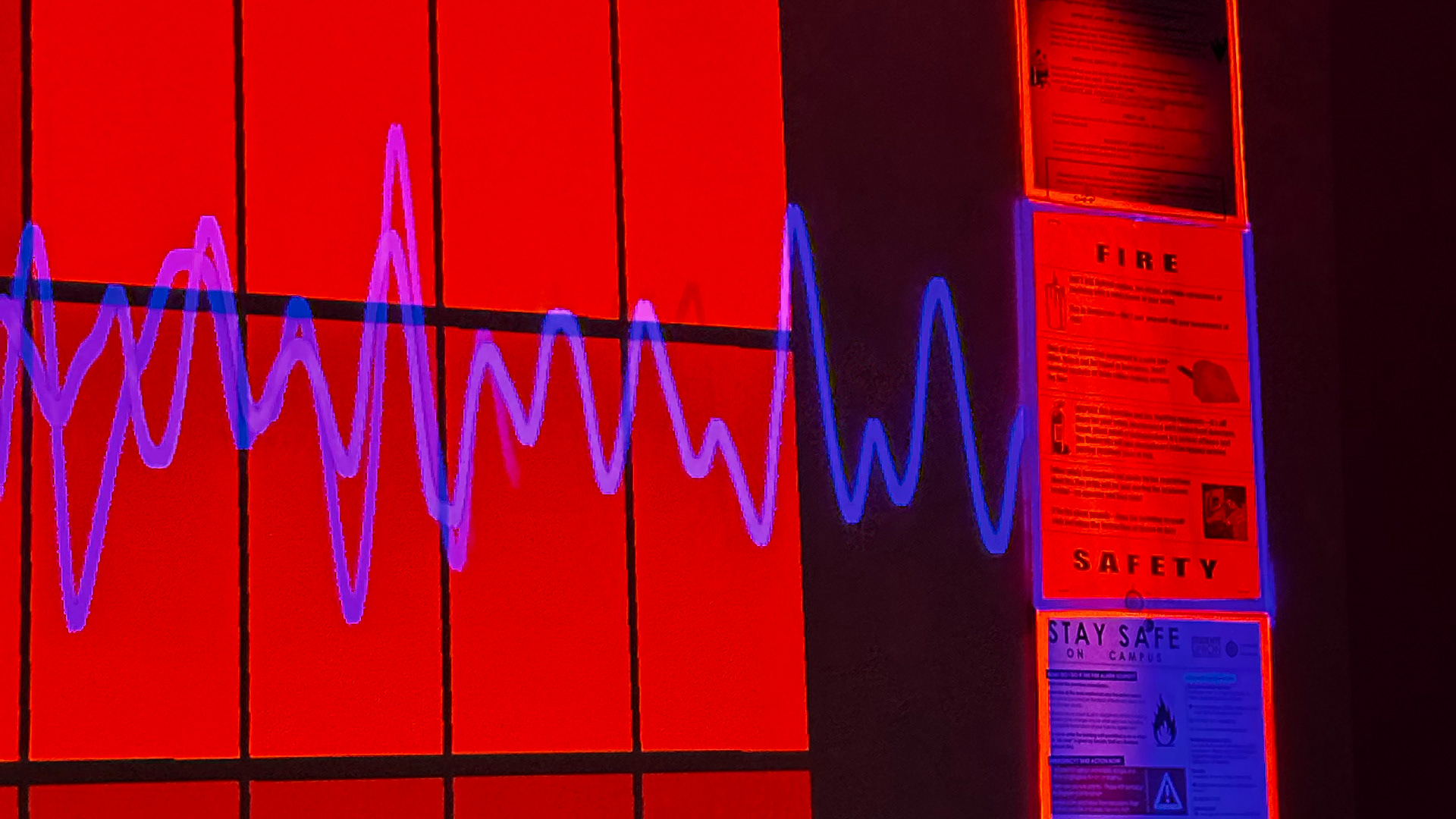
Blizzard
An experimental project where I filmed myself walking on top of a mountain during a snowstorm. In the footage, I took off my jacket and looked around, creating a feeling of isolation. Using green screen technology, I added snow effects and blue color filters to enhance the harsh, cold environment. The project focused on building an atmosphere through the combination of green screen, effects, and color grading.
This experiment allowed me to refine my skills in using green screen techniques alongside environmental effects. It helped me explore the impact of atmospheric conditions in storytelling, adding depth and realism to the scene.
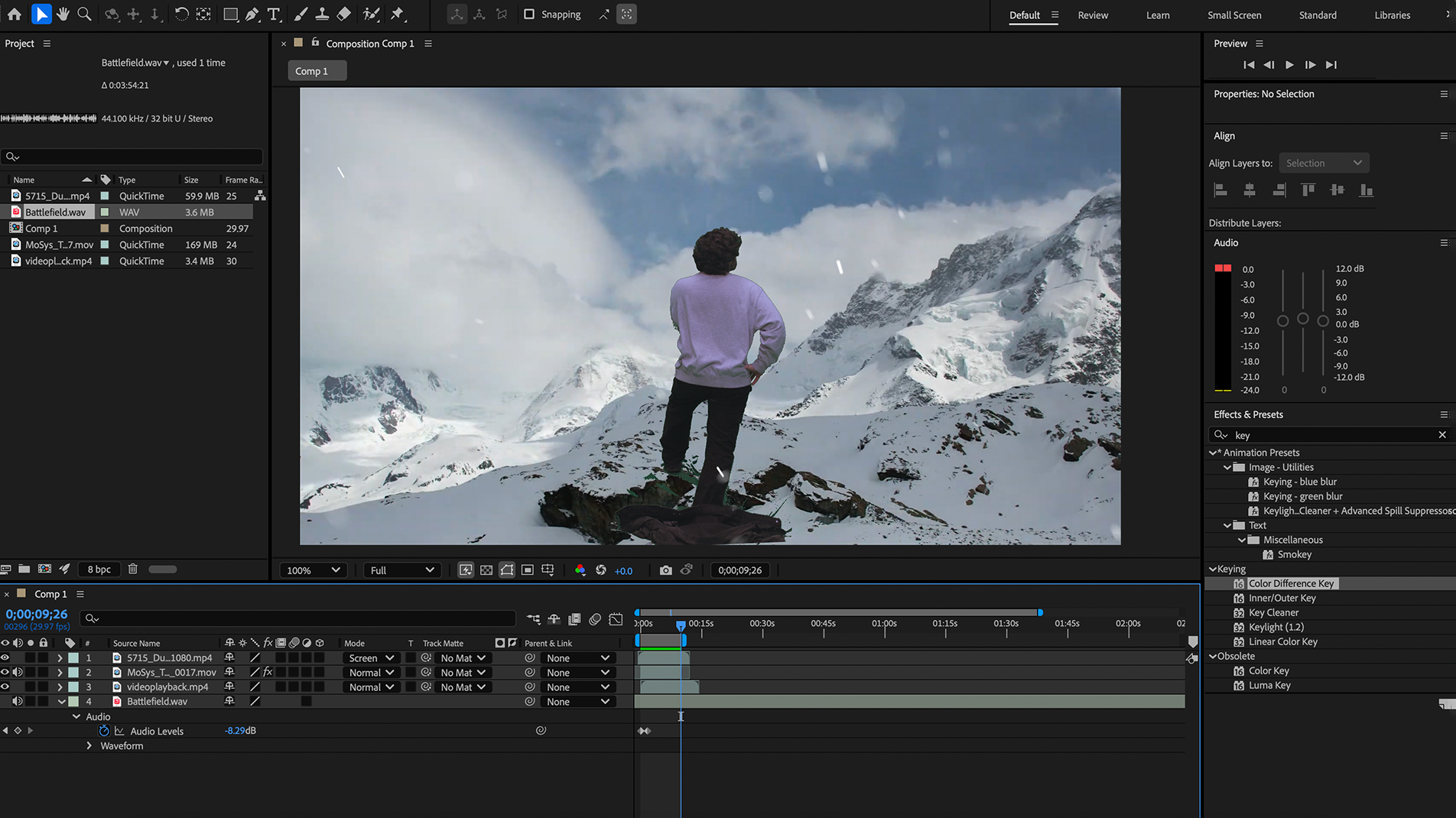
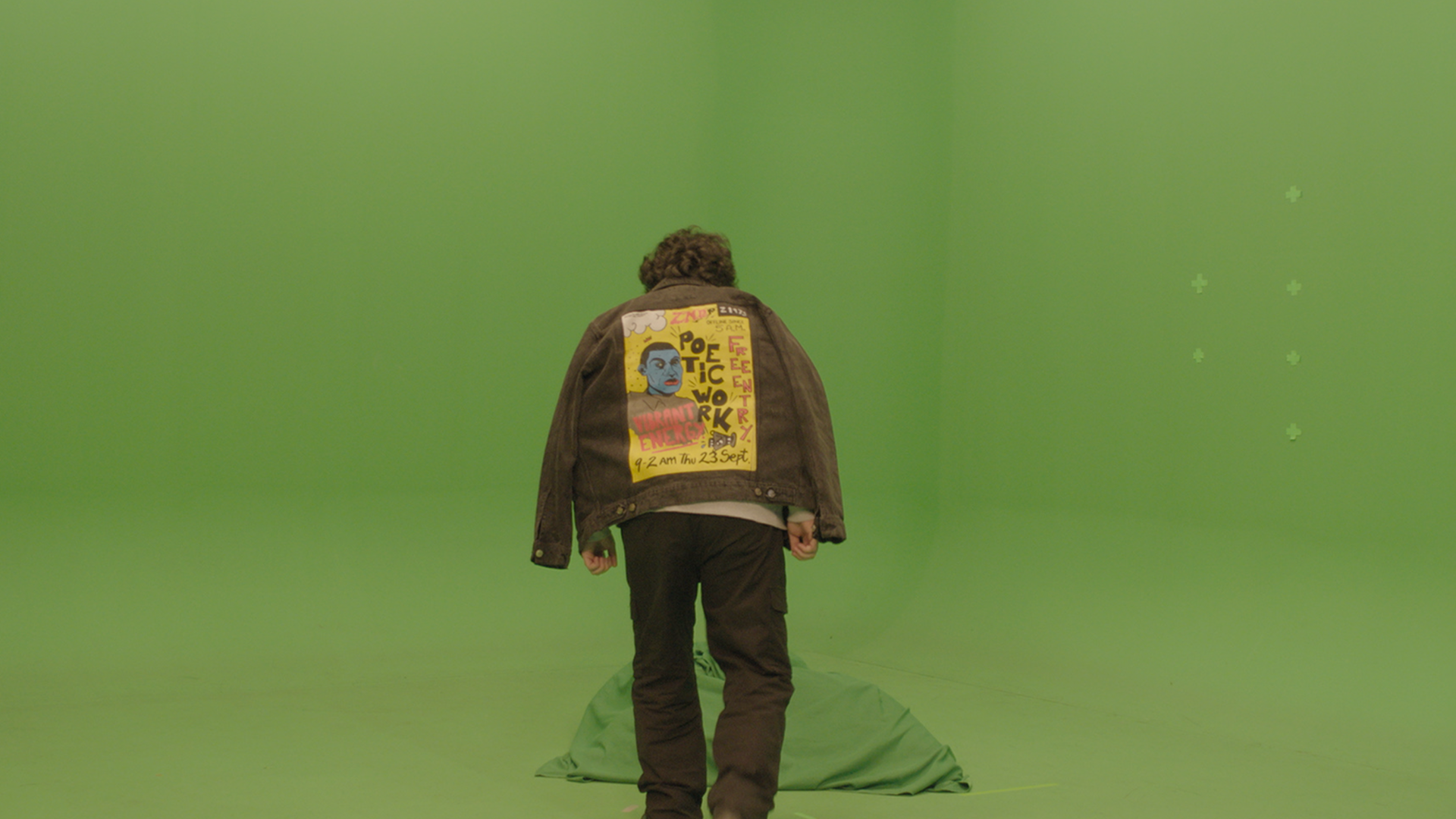
Africa
A playful experiment that combined green screen footage of African animals with an animated background and sound waves set to the song "Africa" by Toto. This project was an exploration of how different media could be combined to create a visually engaging and humorous piece.
I used projection mapping to layer the green screen footage onto various surfaces, experimenting with how the projected images interacted with the physical space. This project helped me refine my projection techniques and understand how to blend different media in a way that creates a cohesive narrative.
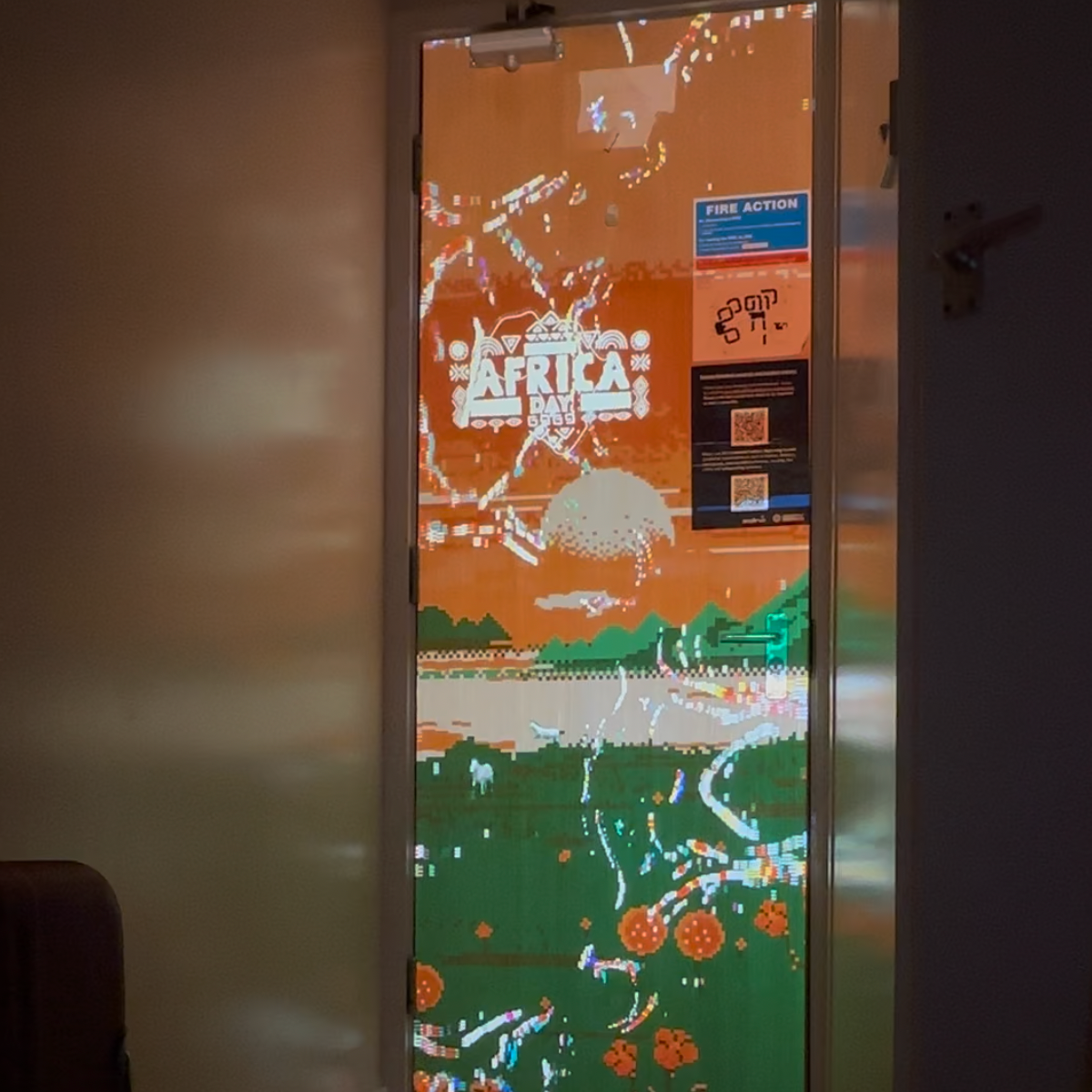
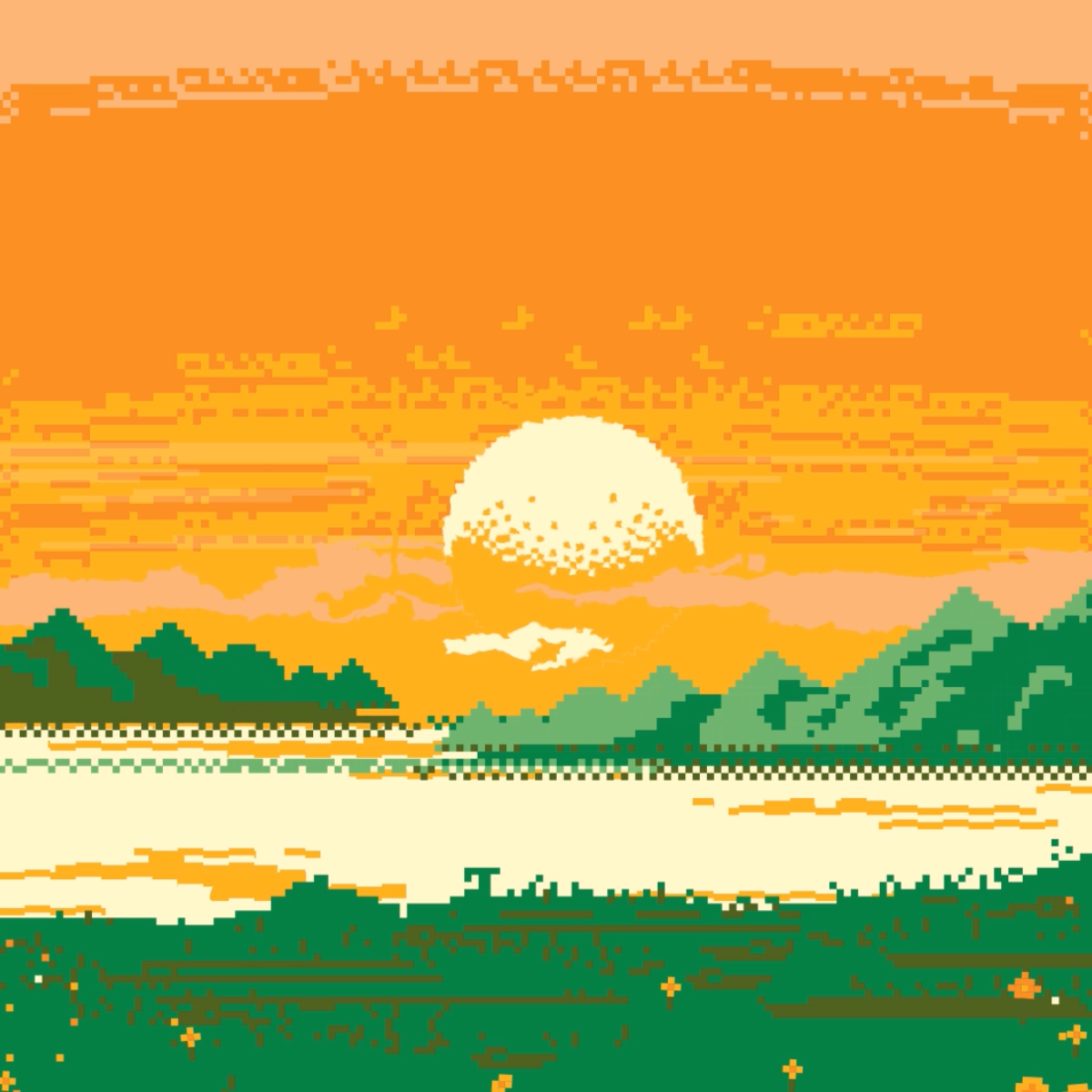
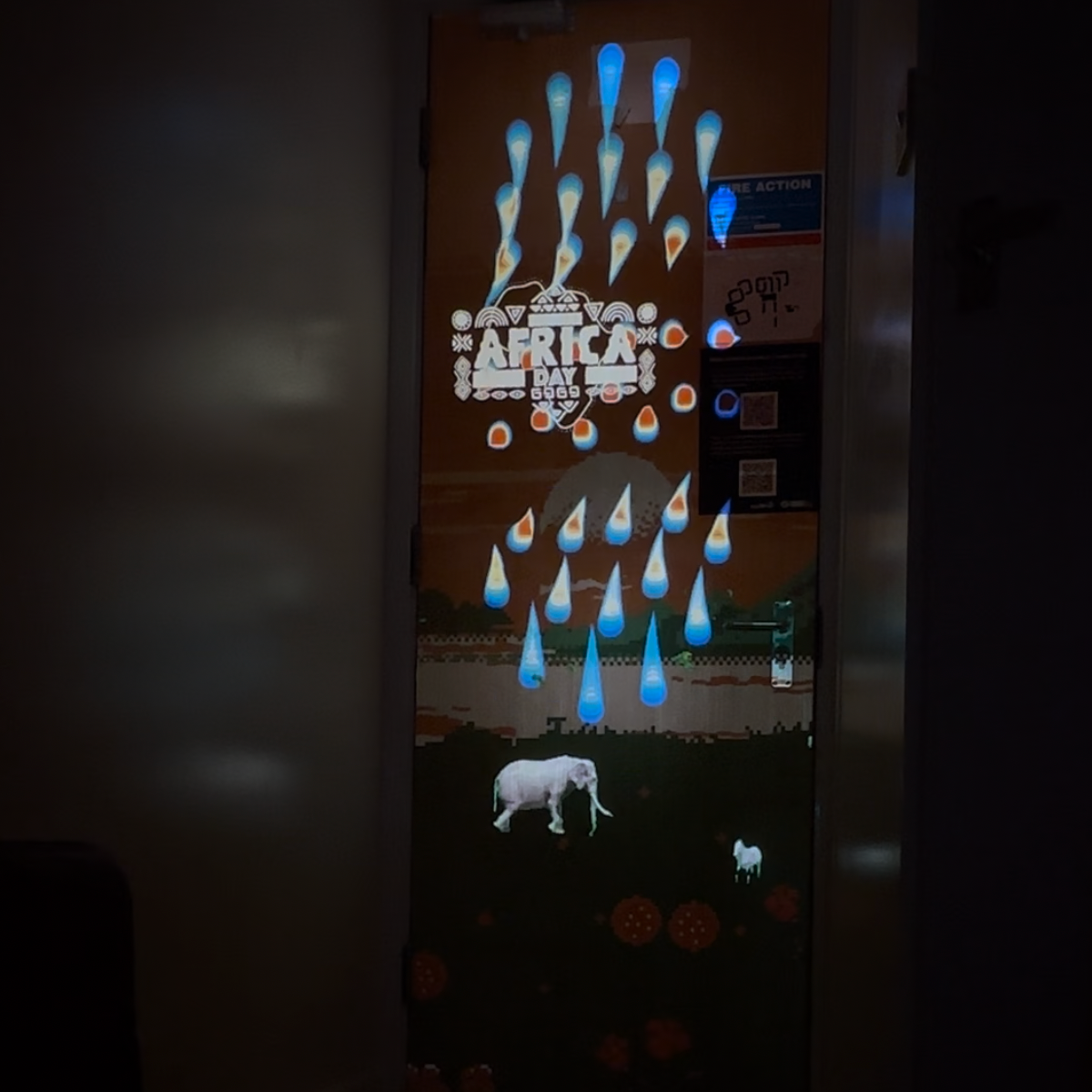
The experiments explored projection mapping, green screen footage, and environmental simulations. Each project blended different media to create immersive visuals, from synchronized sound and light to playful animations and snow effects. These experiences helped refine my technical skills and ability to use media creatively for emotional storytelling.
Complex Layering & Photo Manipulation
Using Adobe Photoshop
I employed complex layering techniques in Adobe Photoshop to add depth and texture to my design. By integrating custom textures and applying blending modes, I created a multi-dimensional effect that enhanced the overall aesthetic of the project.
3D Modeling
Using Maya
Using Maya, I experimented with 3D modeling to visualize how my 2D designs would interact with real-world environments. I focused on creating simple models and applying textures and shadows to understand how my designs would look when applied to physical spaces or objects.
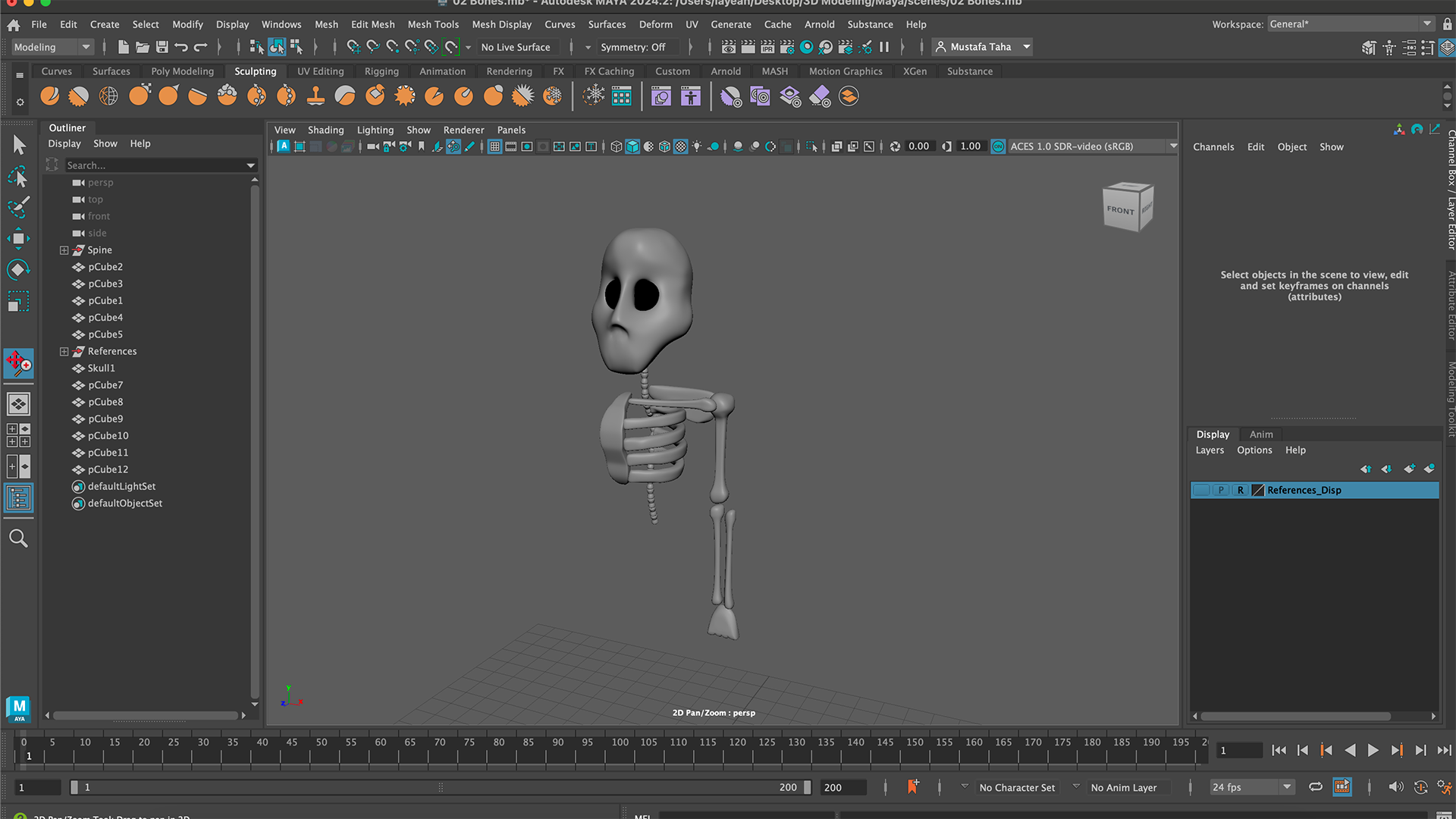
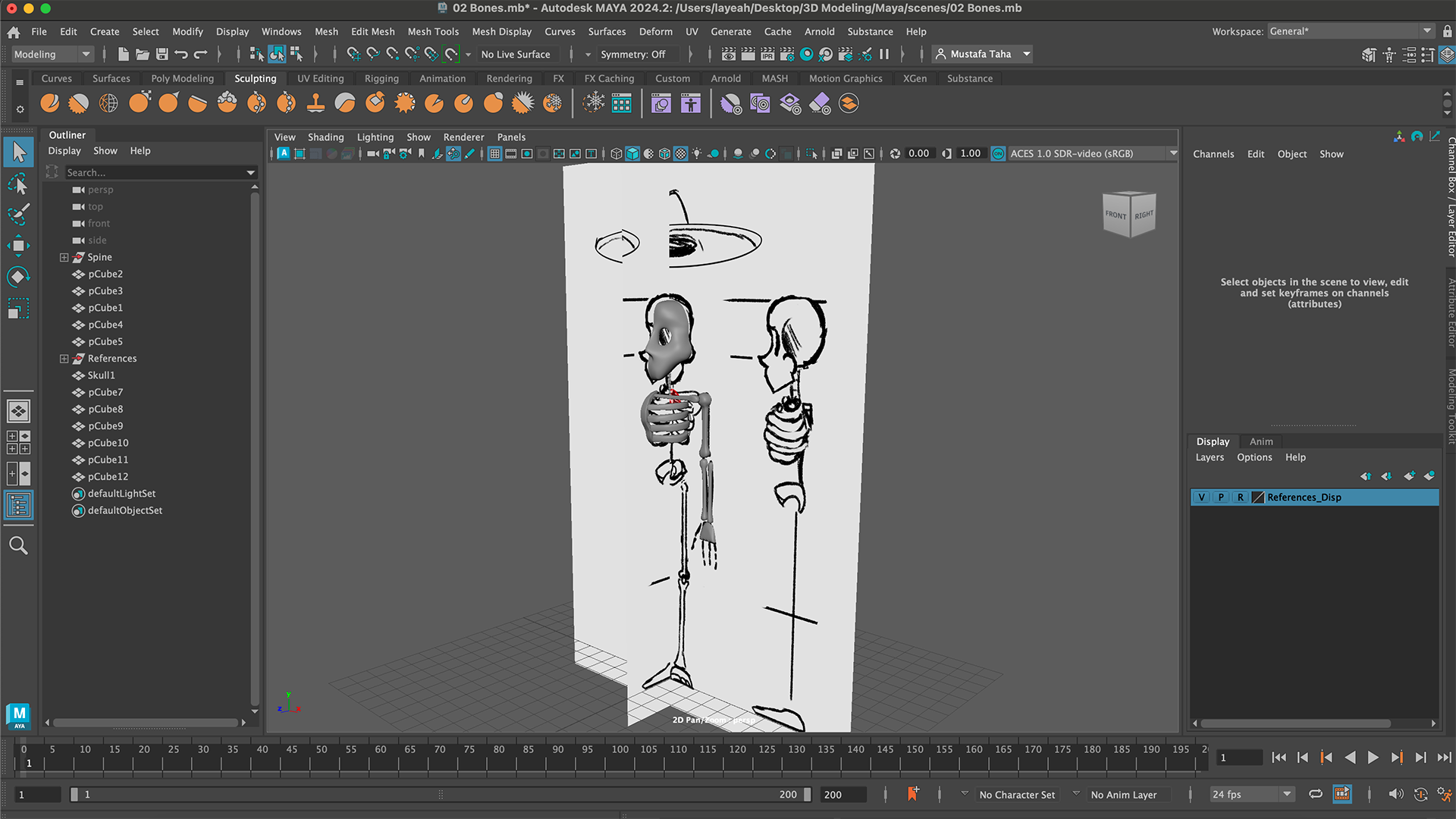
3D Scanning
Using KIRI Engine
I used the KIRI Engine App on my iPhone for 3D scanning to capture real-world objects and environments. This allowed me to incorporate realistic, scanned elements into my project, enhancing its visual depth and offering a unique blend of physical and digital artistry.
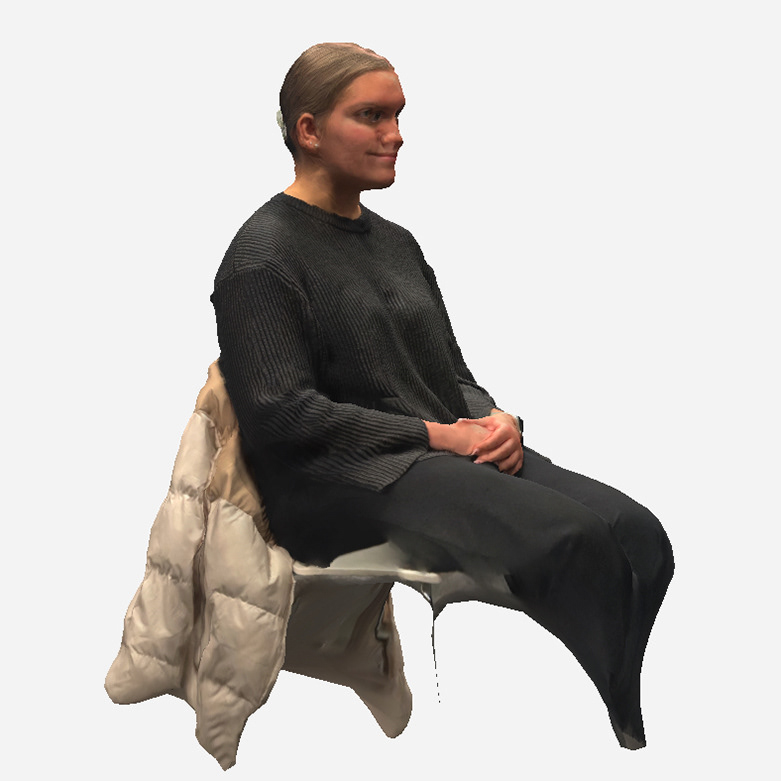
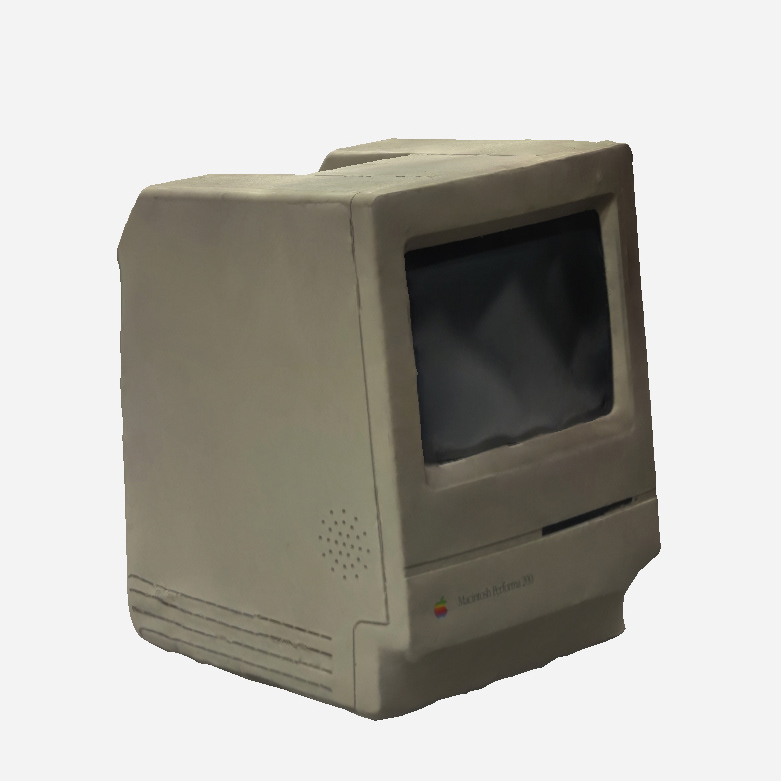
Motion Graphics & Green Screen Keying
Using Adobe After Effects
In Adobe After Effects, I utilized motion graphics techniques to animate design elements and create dynamic presentations. I also employed green screen keying to integrate moving elements seamlessly into the background, enhancing the visual flow and narrative of the project.
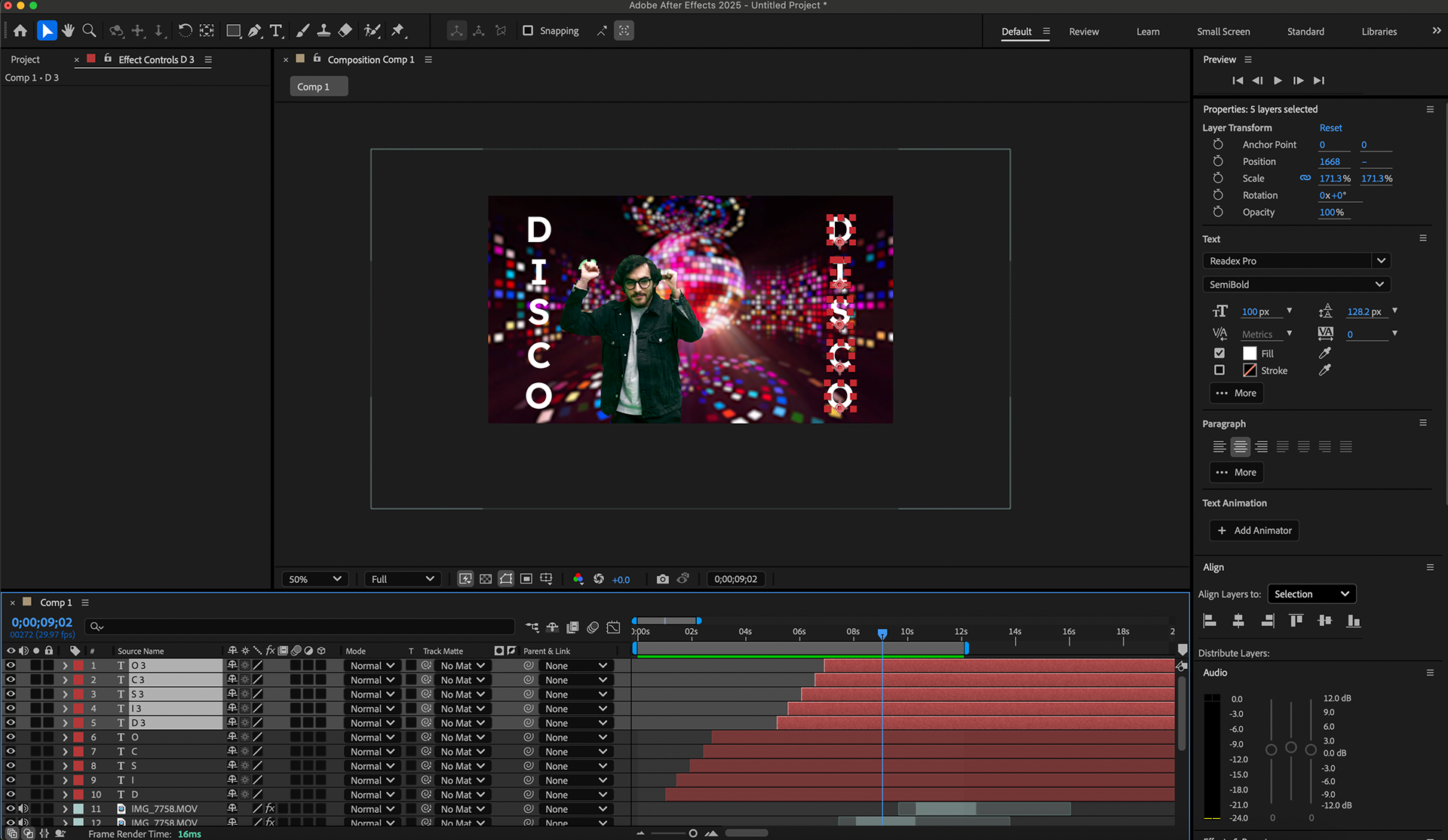
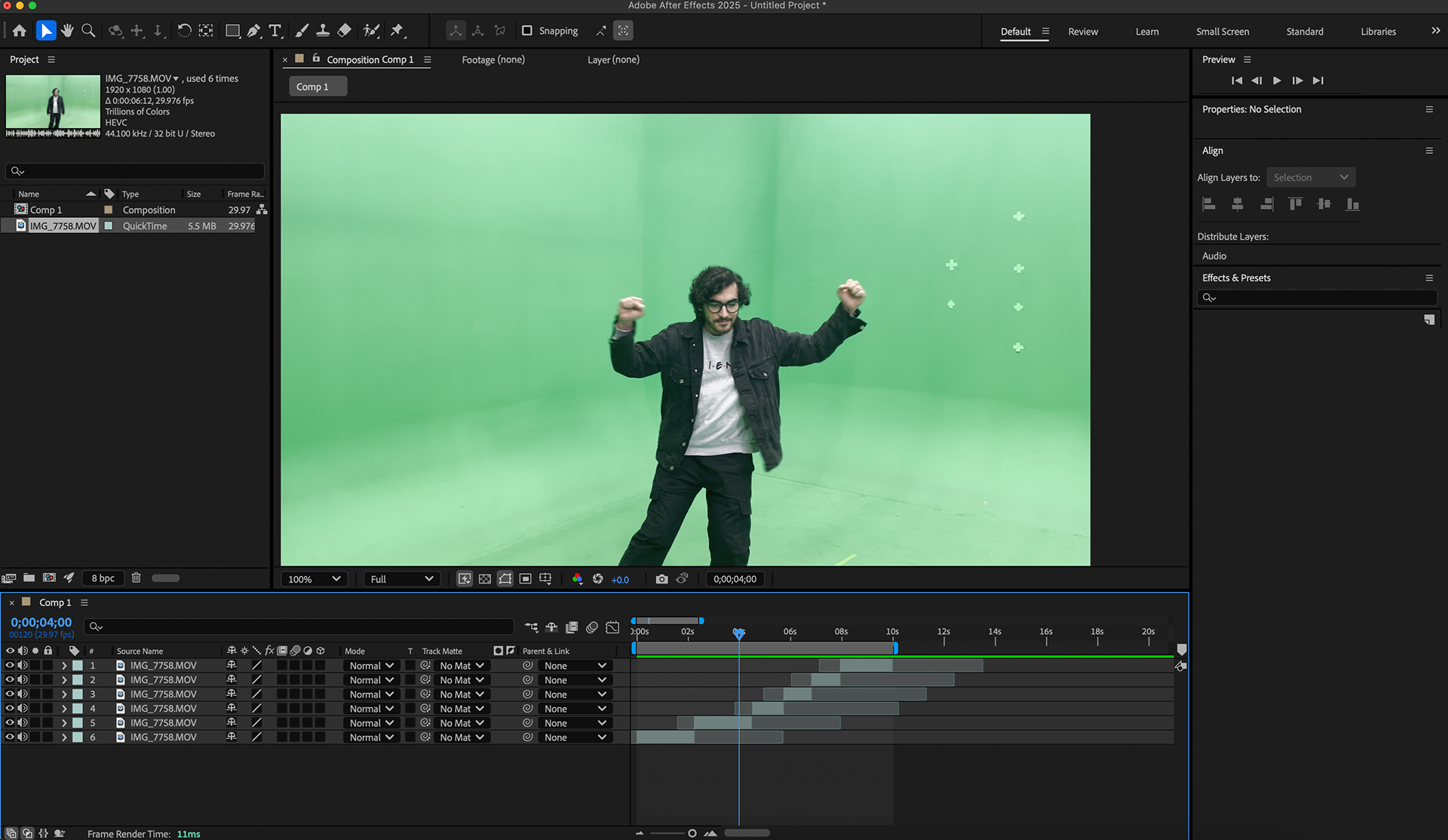
Projecting
Using MadMapper
To bring my designs to life in real-world environments, I used MadMapper for projection mapping. This allowed me to project my digital creations onto physical surfaces, experimenting with how they interacted with real-world spaces and enhancing the immersive experience of the project.
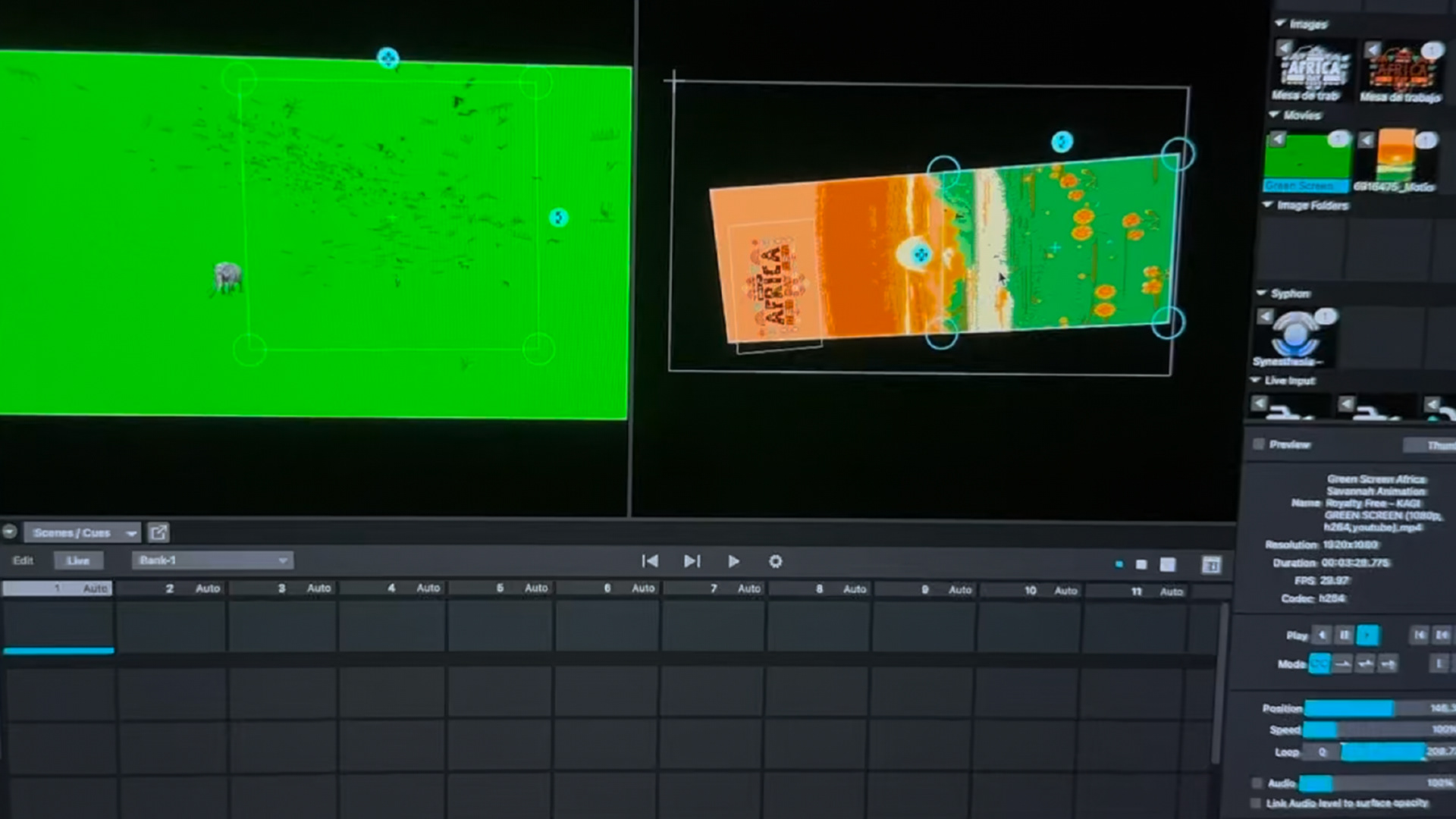
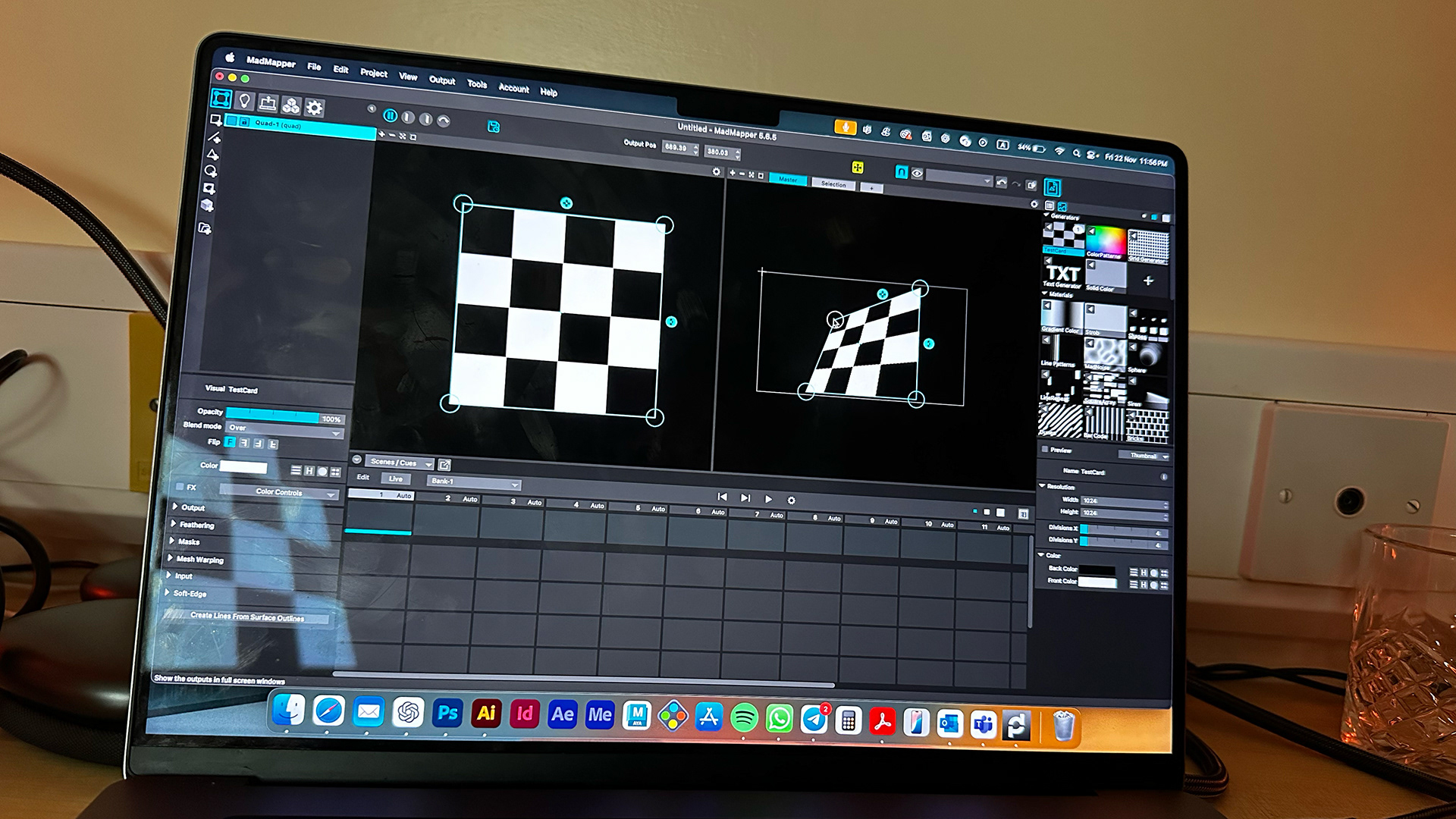
The techniques I employed include complex layering and photo manipulation in Photoshop, 3D experimentation with Maya, 3D scanning using the KIRI Engine app, motion graphics and green screen keying in After Effects, and projection mapping with MadMapper. These methods helped create a cohesive and dynamic final outcome.
Final Project: Mapping Emotions
For my final project, "Mapping Emotions," I based the concept on a medical term that refers to a systematic approach distinguishing between internal and external factors that influence human health. I used a headless skeleton as a metaphor for the absence of self-awareness, exploring how identity is shaped by the interaction of these internal and external forces. In the projection, external elements like water, fire, and wind represent environmental influences, while internal pulses of light symbolize emotions, memories, and moments that define the individual. As these forces converge at the neck, a tree grows from the headless skeleton, symbolizing the emergence of thought and self-identity. The evolving branches illustrate the ongoing cycle of life, reflecting the constant interplay between internal emotions and external environments that drive personal growth and transformation.
On the technical side, I incorporated a combination of 3D-animated footage and green screen elements to enhance the visual complexity of the project. Using MadMapper, I projected these animations onto a physical headless skeleton. The 3D animations were created to represent the internal forces, such as pulses of light, while the green screen footage allowed me to seamlessly integrate external elements like the environment, which was crucial in symbolizing the environmental influences on identity. This blend of physical and digital components allowed me to explore the interaction between internal emotions and external forces in a visually engaging way.
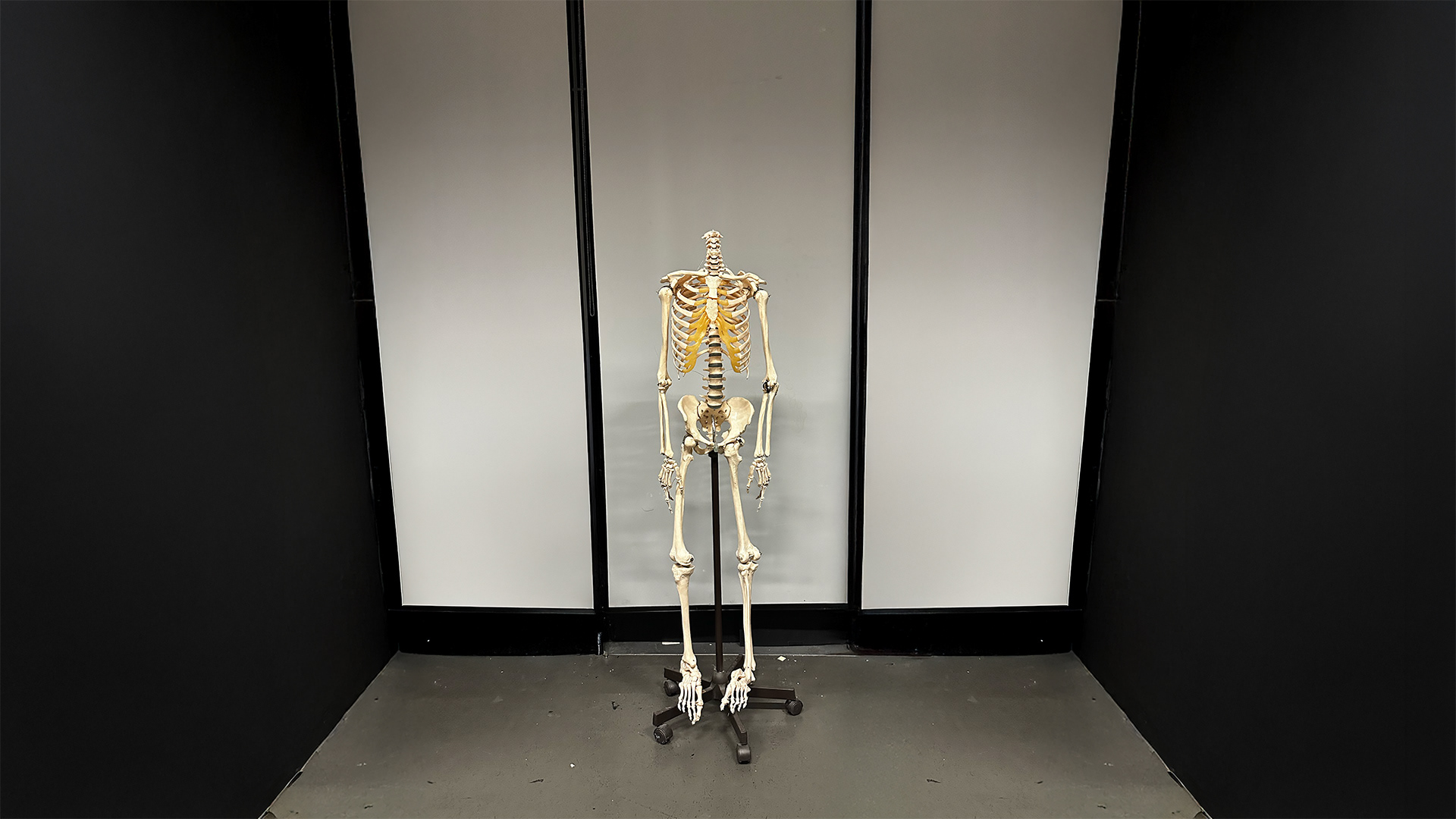
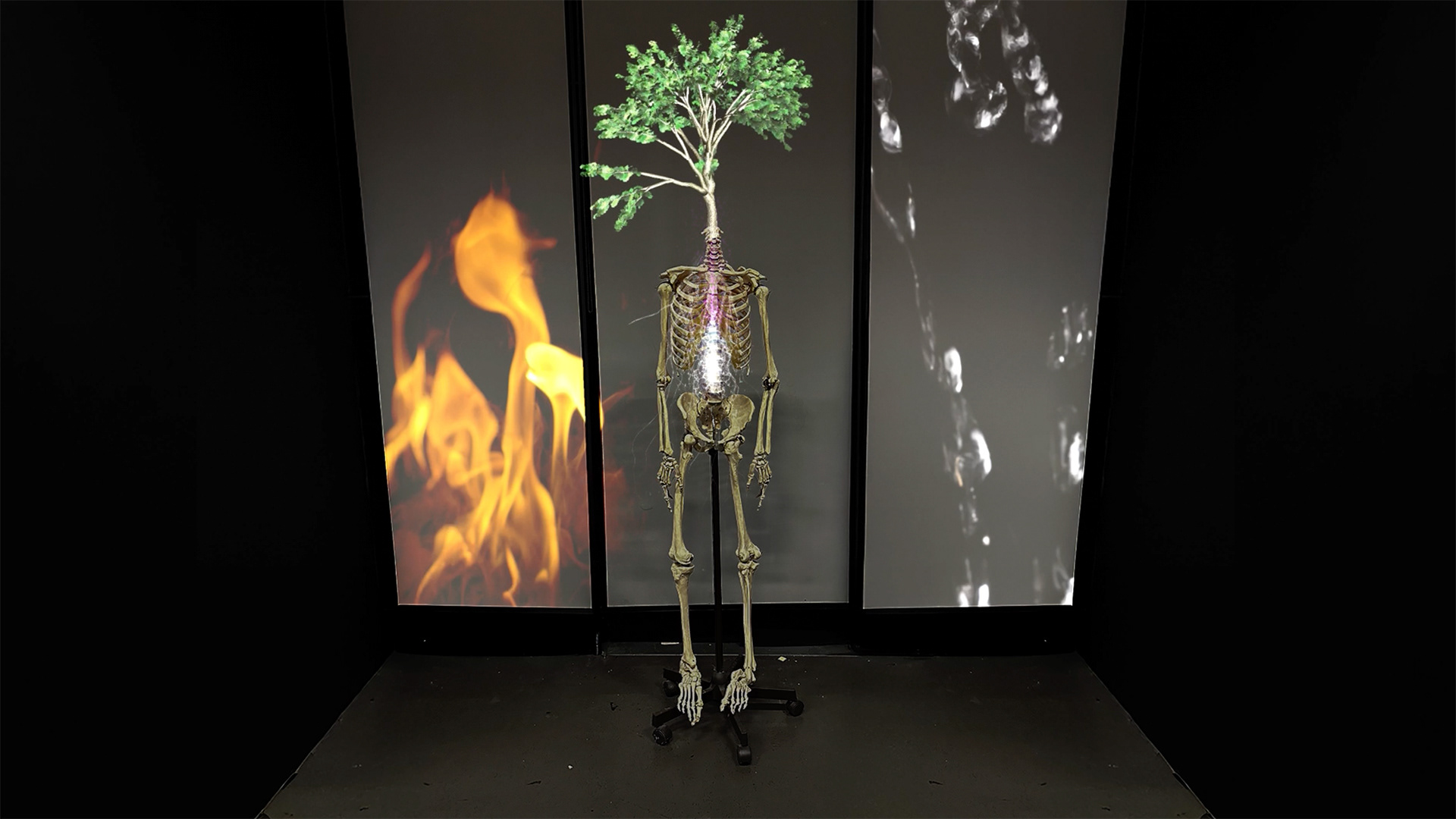
Finally, I used After Effects for the composition and post-production work, integrating all the elements together. Here, I adjusted the timing and layering of the projections to ensure that the transitions between the external environmental forces and internal pulses of light were fluid and coherent. The sound design further emphasized these transitions, creating an experience that heightened the sense of emotional depth and transformation.
Mapping Emotions represents a synthesis of conceptual thinking and technical expertise, using digital tools to explore the complexity of identity and emotional growth within the context of the internal and external forces that shape us.
I can see a clear progression in both my technical skills and conceptual thinking. Each project built on the previous one, allowing me to explore new media and techniques while refining my approach to digital art. The integration of projection mapping, 3D scanning, and green screen techniques has expanded my understanding of how technology can be used to create immersive, transformative experiences.

